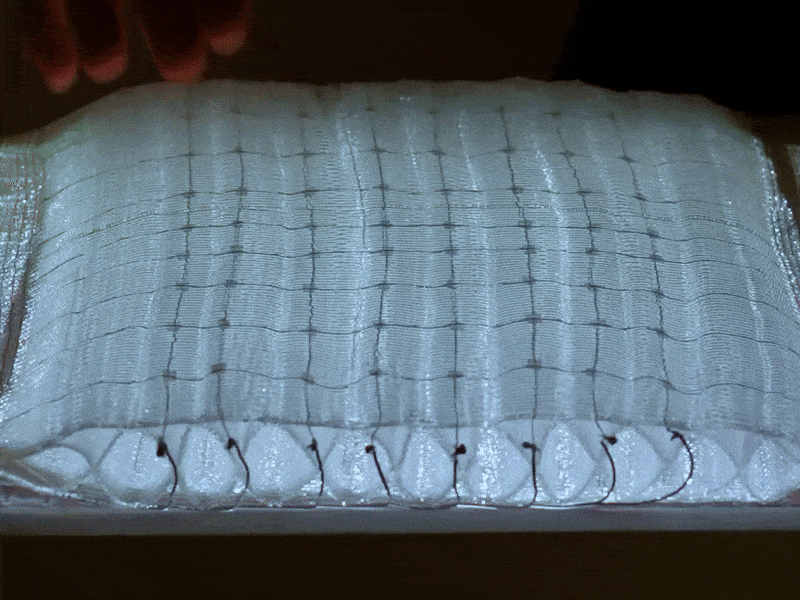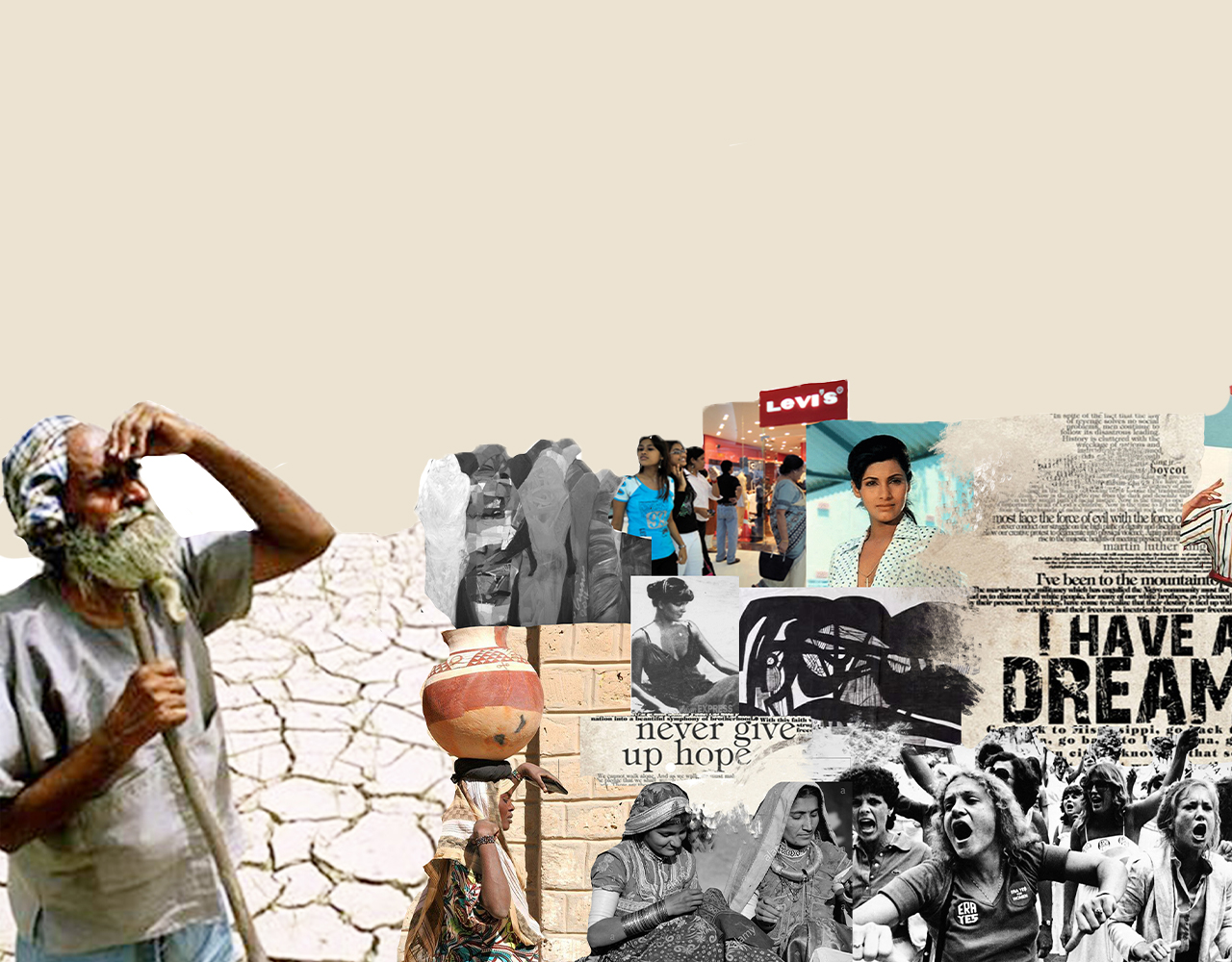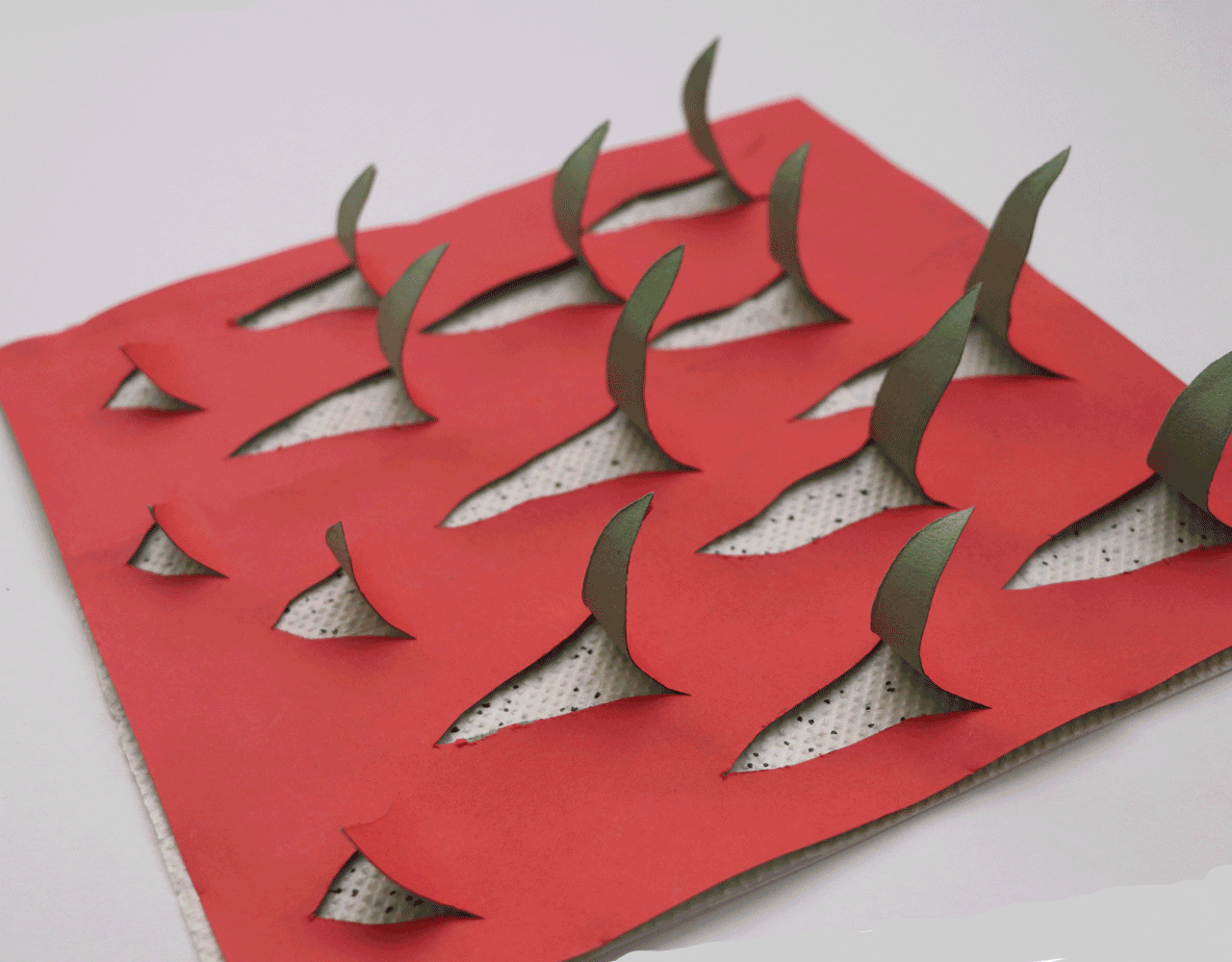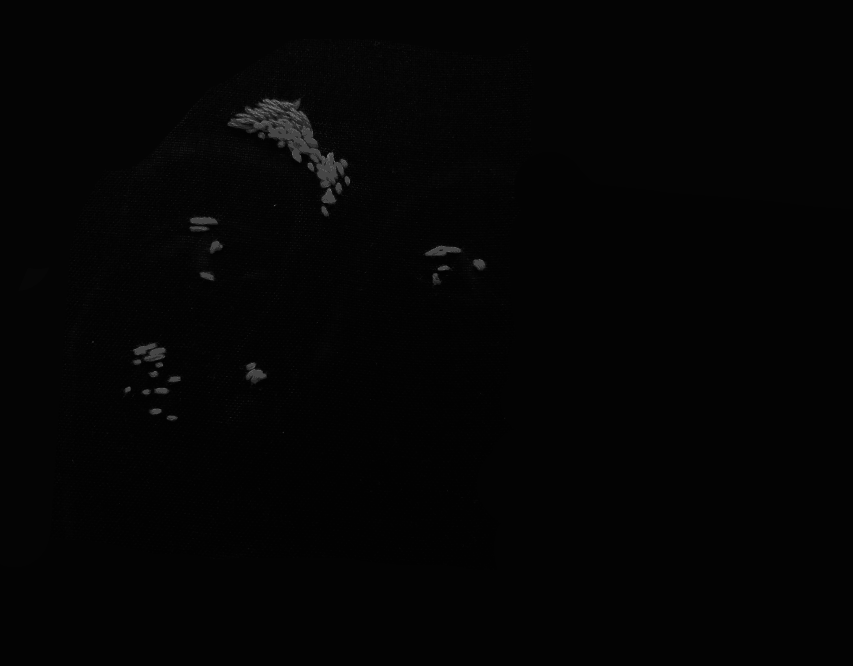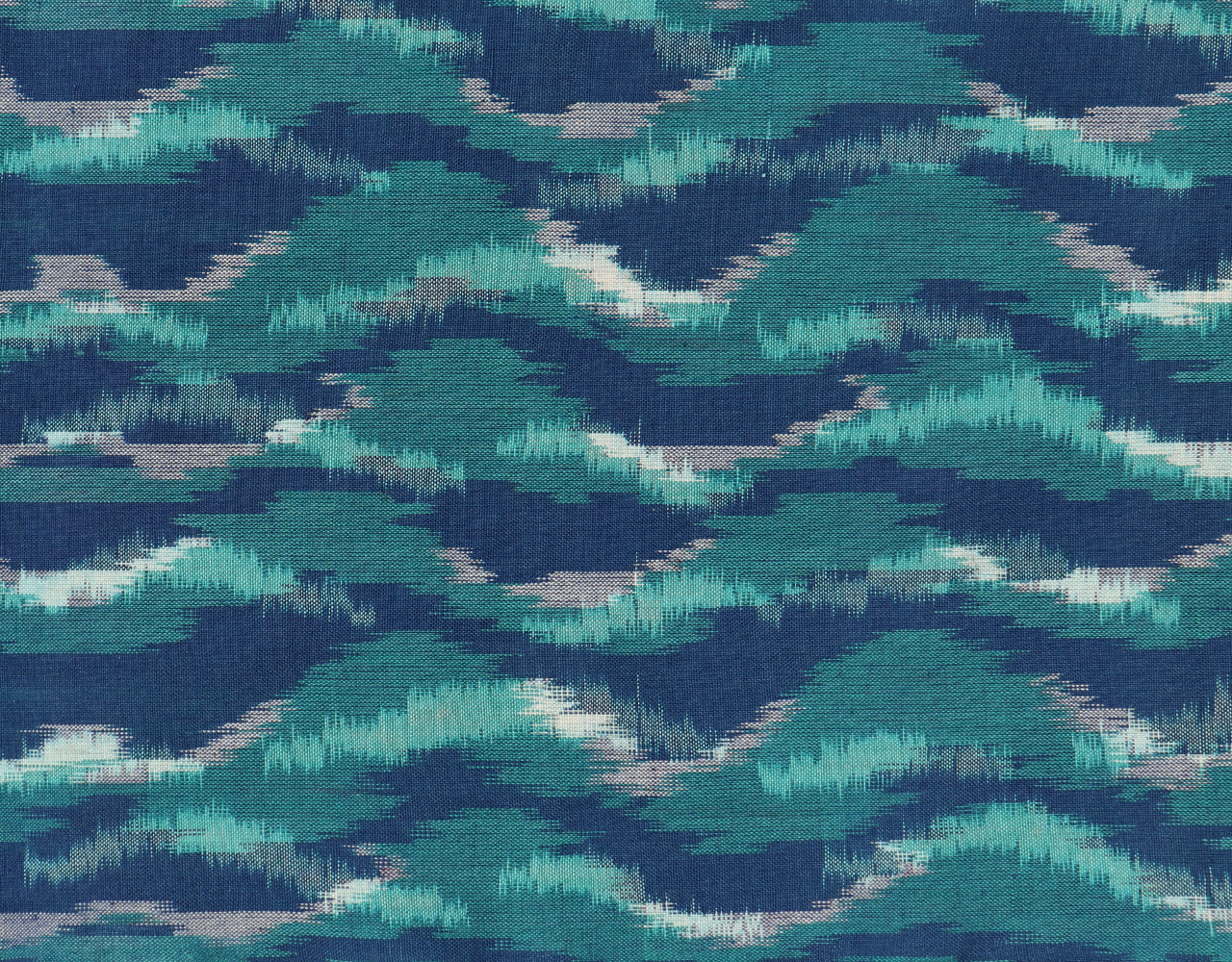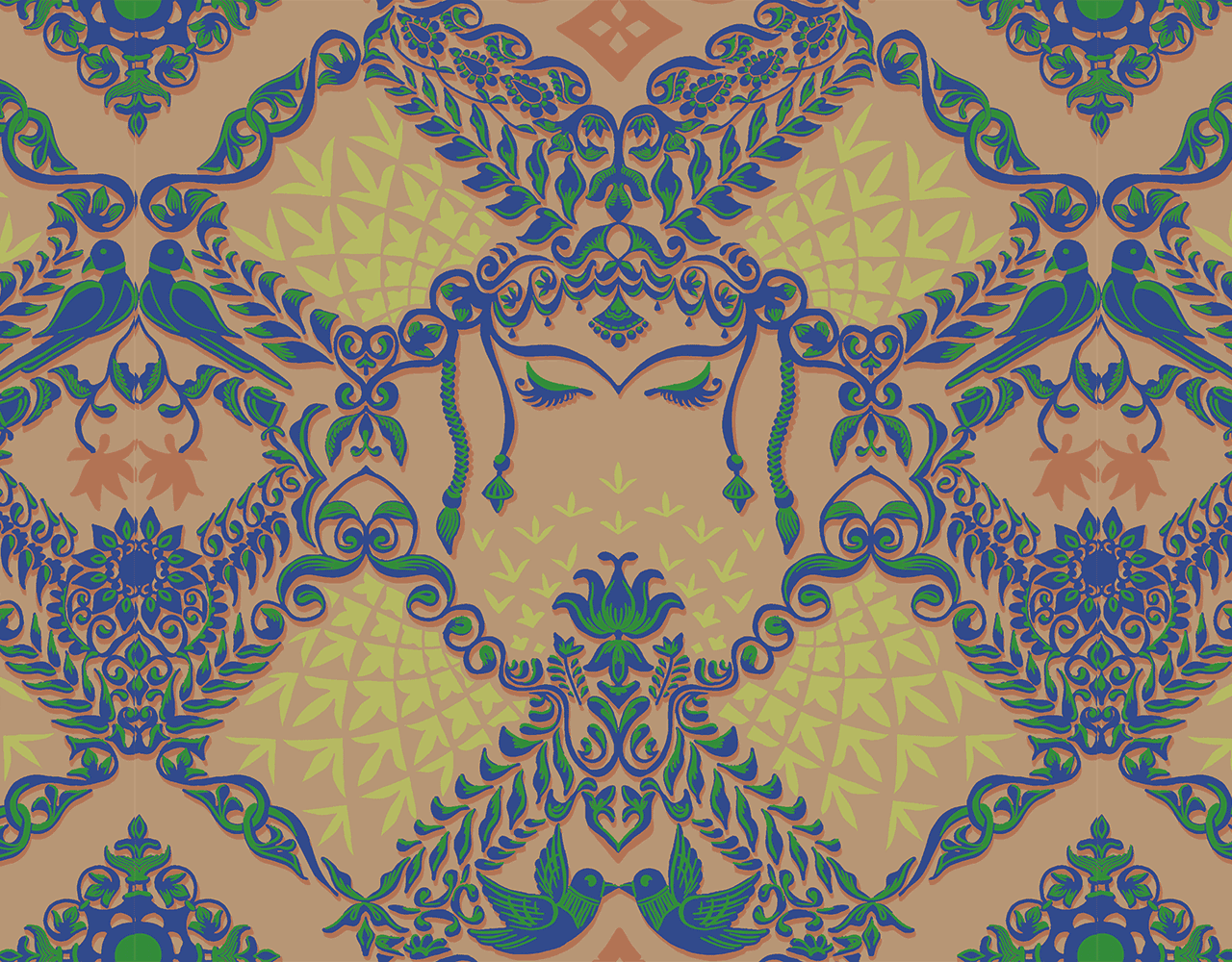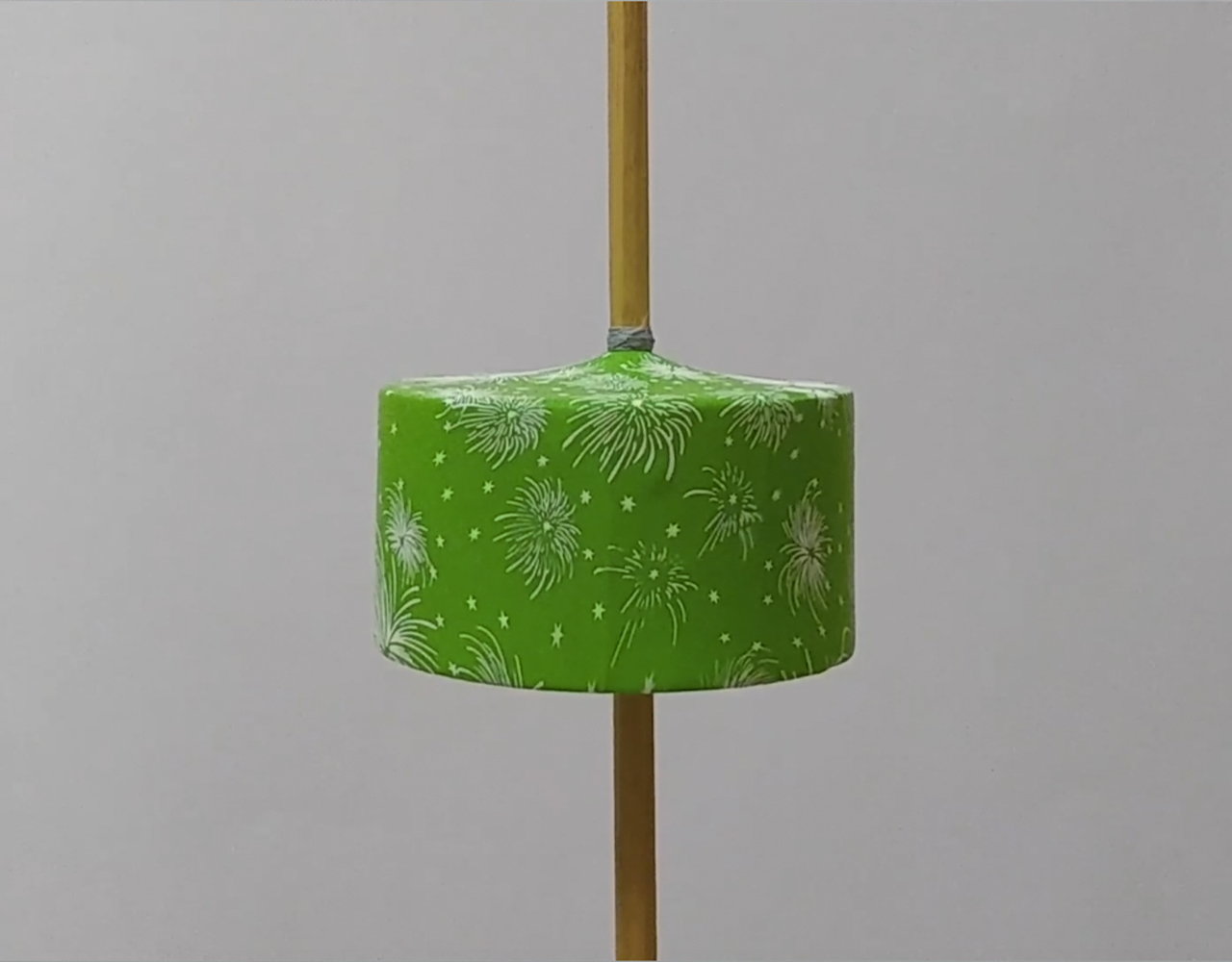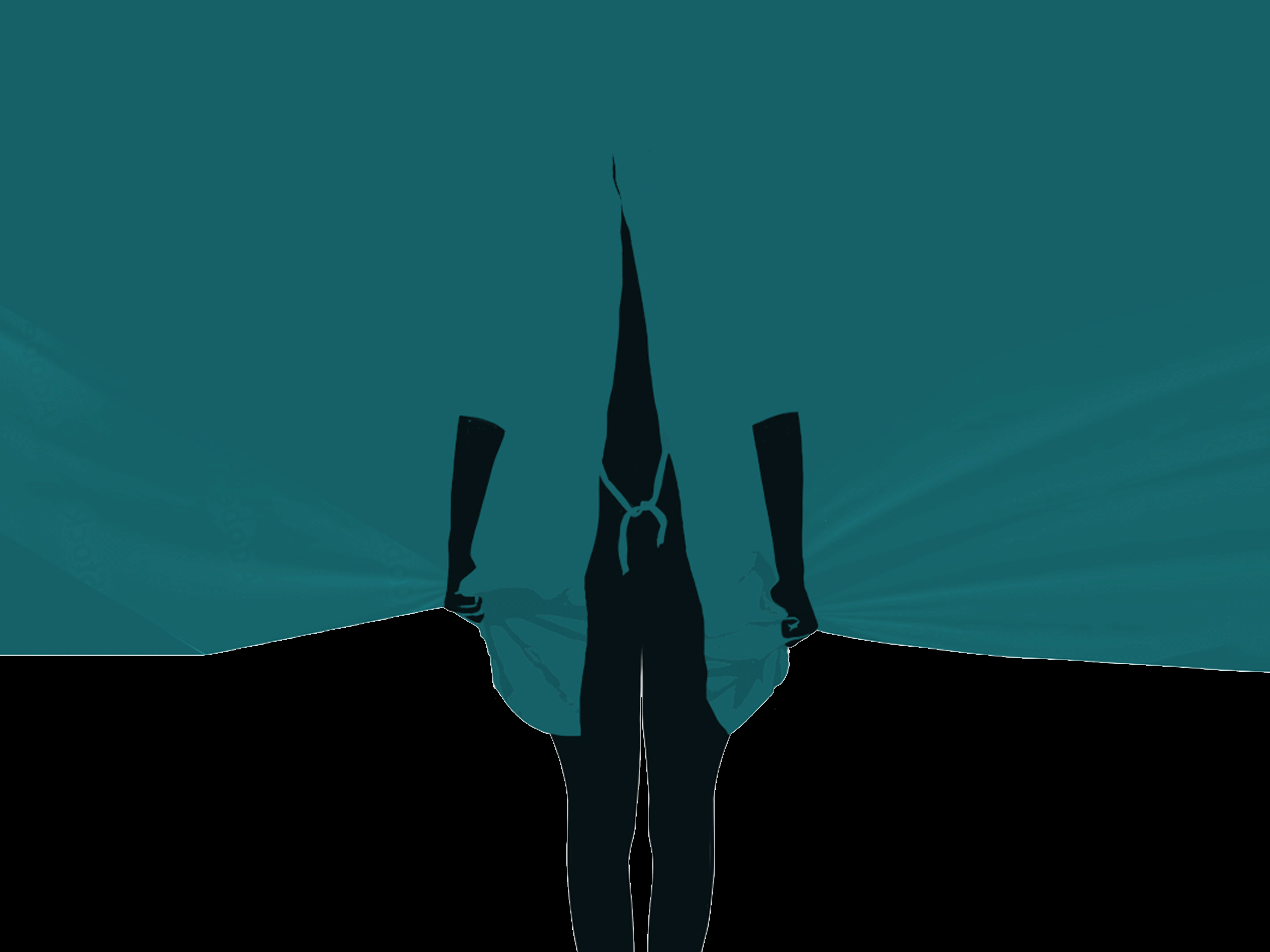WOVEN SENTIENCE
3D-weaving | A sensorial Interface
![]()
ECHOES-UNSEEN
EVIL EYE | The gaze that gazes back
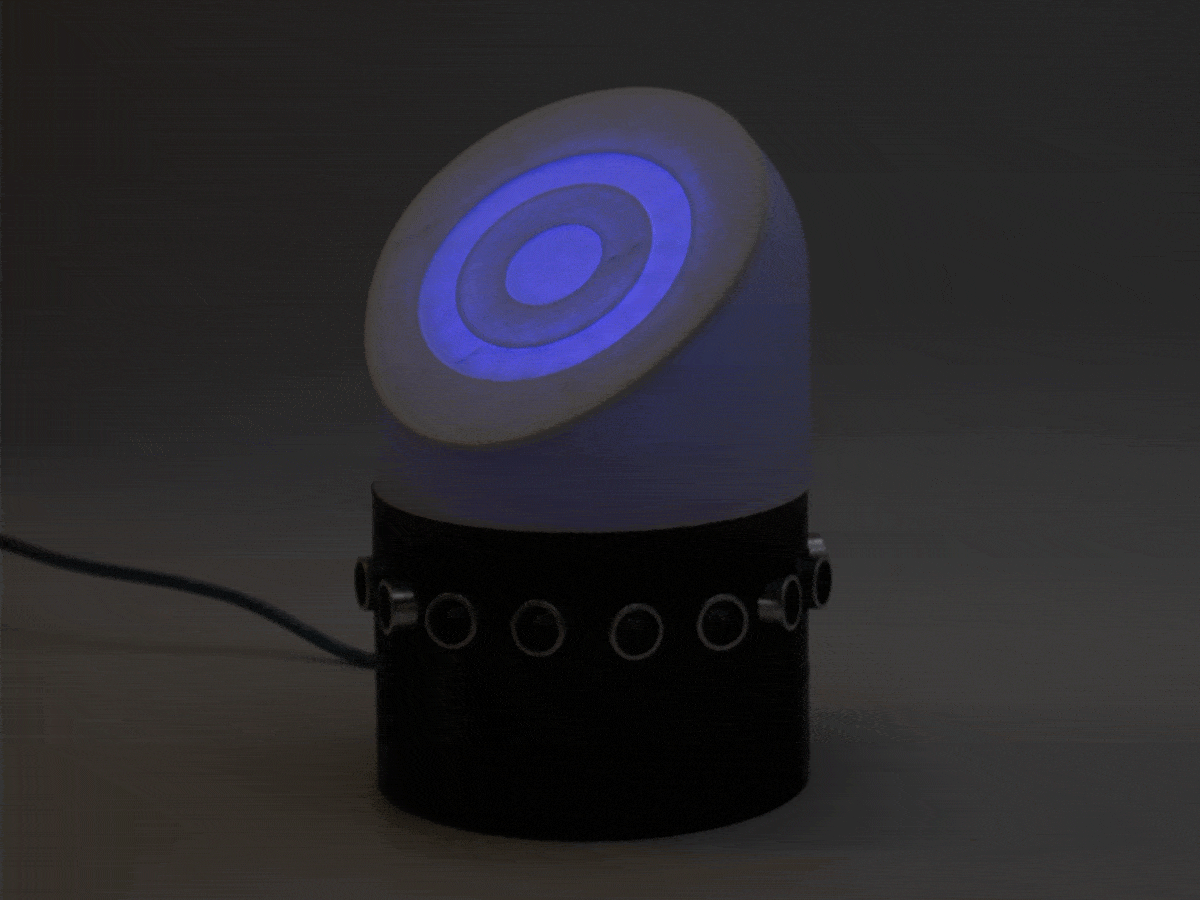
TANA-BANA
Advance Weaving Techniques
MADURKATHI
Illustrative craft documentation
CONTEMPORARY CONCERNS
Re-establishing Craft Systems
Re-THINK STRAWS
In space, Time
WOVEN SENTIENCE
︎
3D WEAVING
A sensorial interface
This thesis Introduces an ecosystem of 3D woven technology that challenges conventions of materiality. By re-imagining woven structures as adaptable, resilient and conductive, this project explores how advance material composition can transform seamlessly across industries from wearables, furniture to outer space and beyond.
This work speculates on the future of woven materials as intelligent systems that not only provide structural integrity but also embed monitoring capabilities.
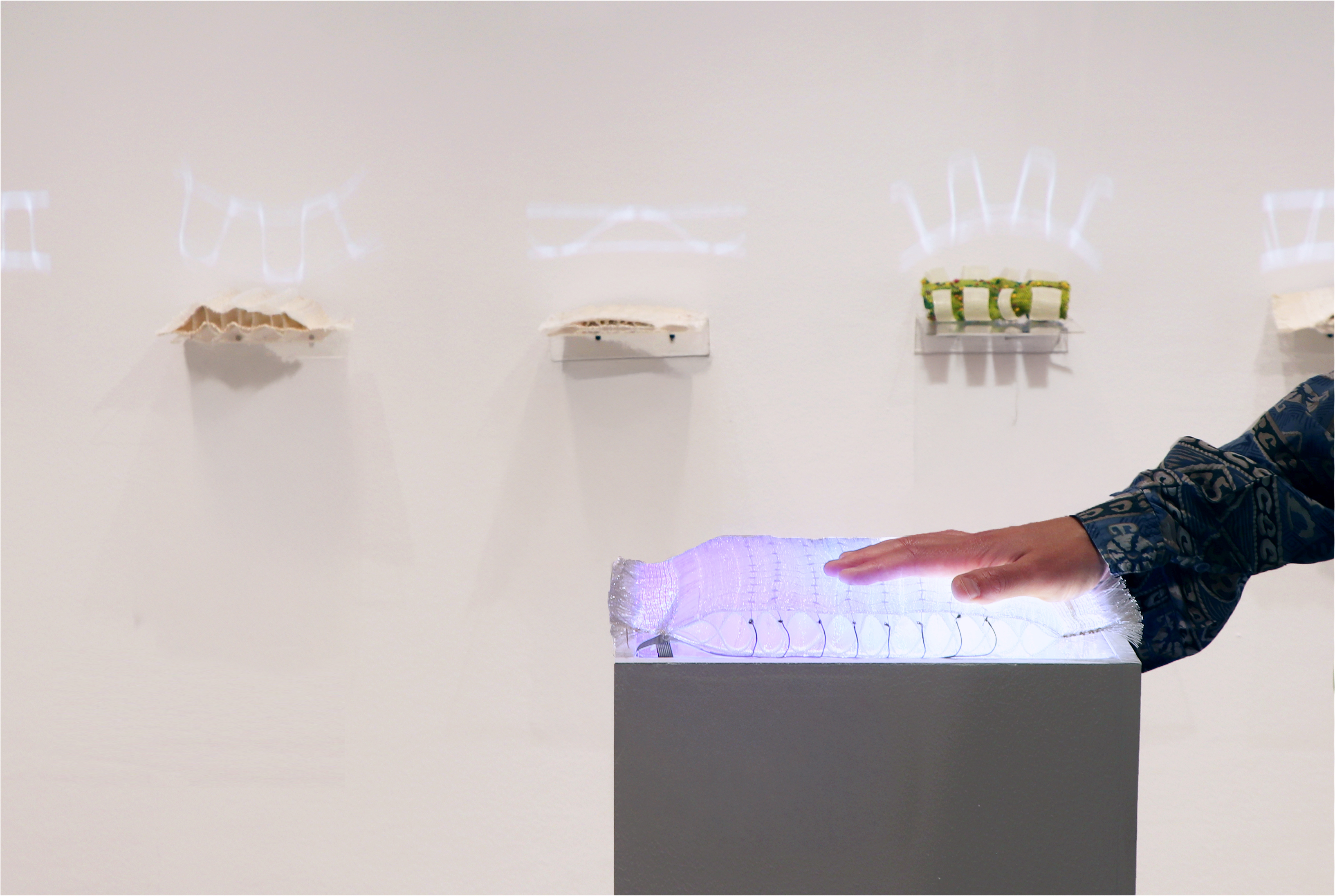
Pressure sensitive woven piece
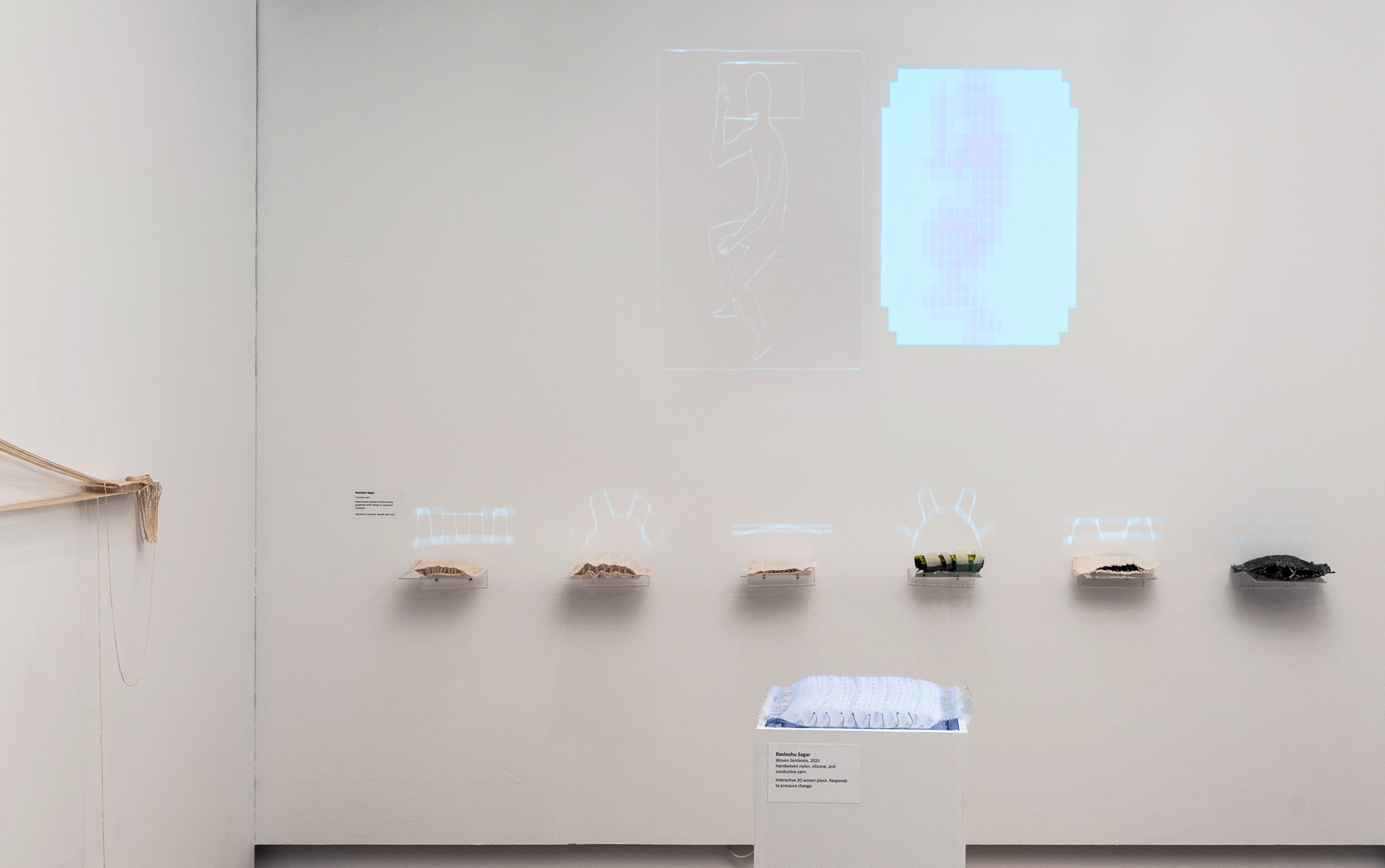
Series of various 3D woven pieces with pertaining animations exhibited at SAIC galleries, Chicago
The Craft
Making of the matetial is core of this technology. By altering traditional craft of weaving with un-conventnal and conductive yarns in an advance composition, this project transforms materials as an active and responsive medium.
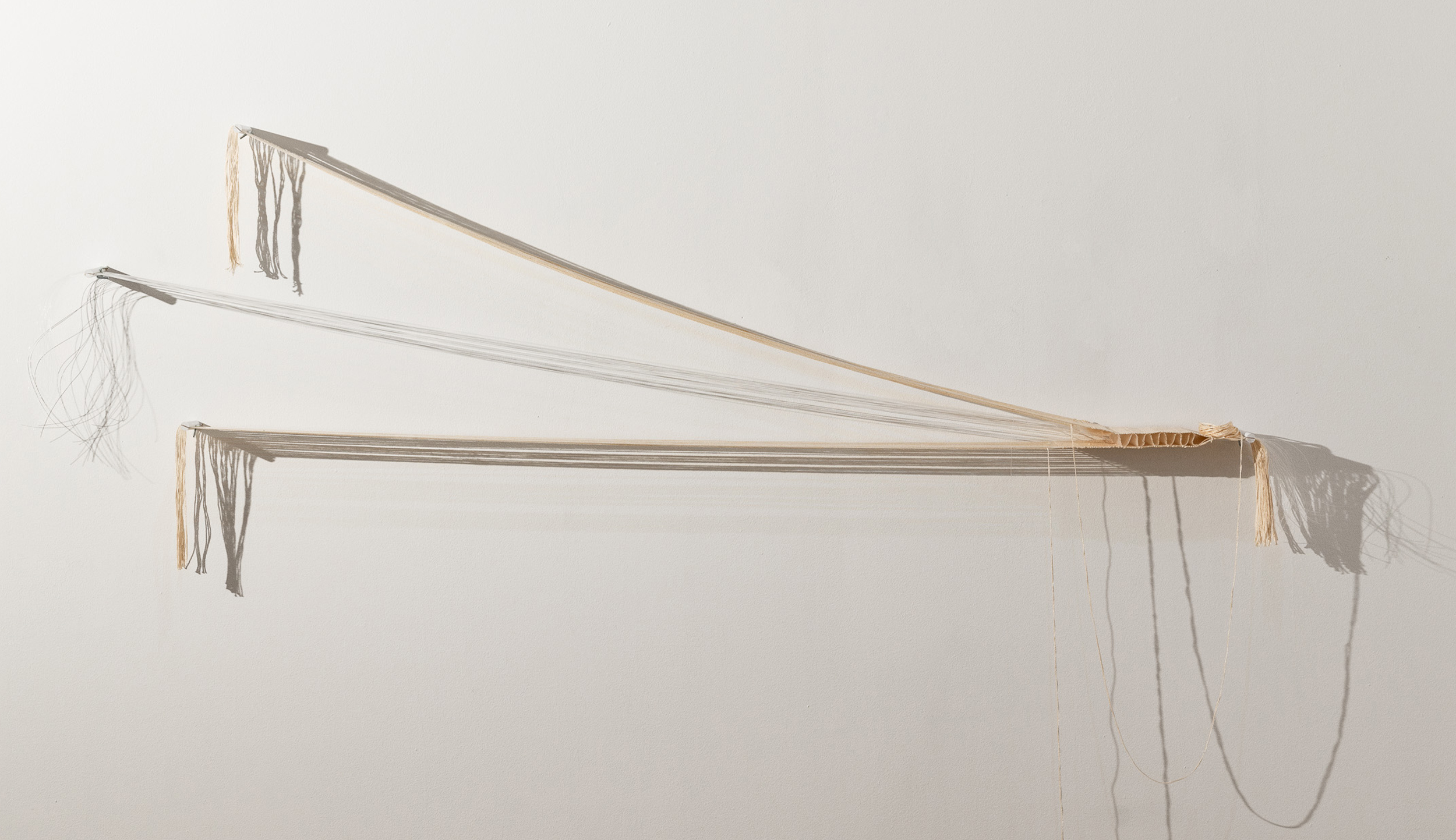
Cross-sectional view of the weave and the weaving process,
also exhibited at SAIC galleries, Chicago
also exhibited at SAIC galleries, Chicago
3D weaving process
Structural Properties
The structural adaptability of this craft lies in it’s internal configuration; by altering the weave’s density, scale, and materials, the same product can serve vastly different functions. Ranging from prolonged ergonomic support and posture correction to monitoring external impact on the body in extreme environments.
The volumetric nature of the weave offers inherent benefits such as impact isolation, acoustic absorption, and spatial buffering. These qualities make the material adaptable across diverse environments—from protective gear to architectural and interior systems
The volumetric nature of the weave offers inherent benefits such as impact isolation, acoustic absorption, and spatial buffering. These qualities make the material adaptable across diverse environments—from protective gear to architectural and interior systems

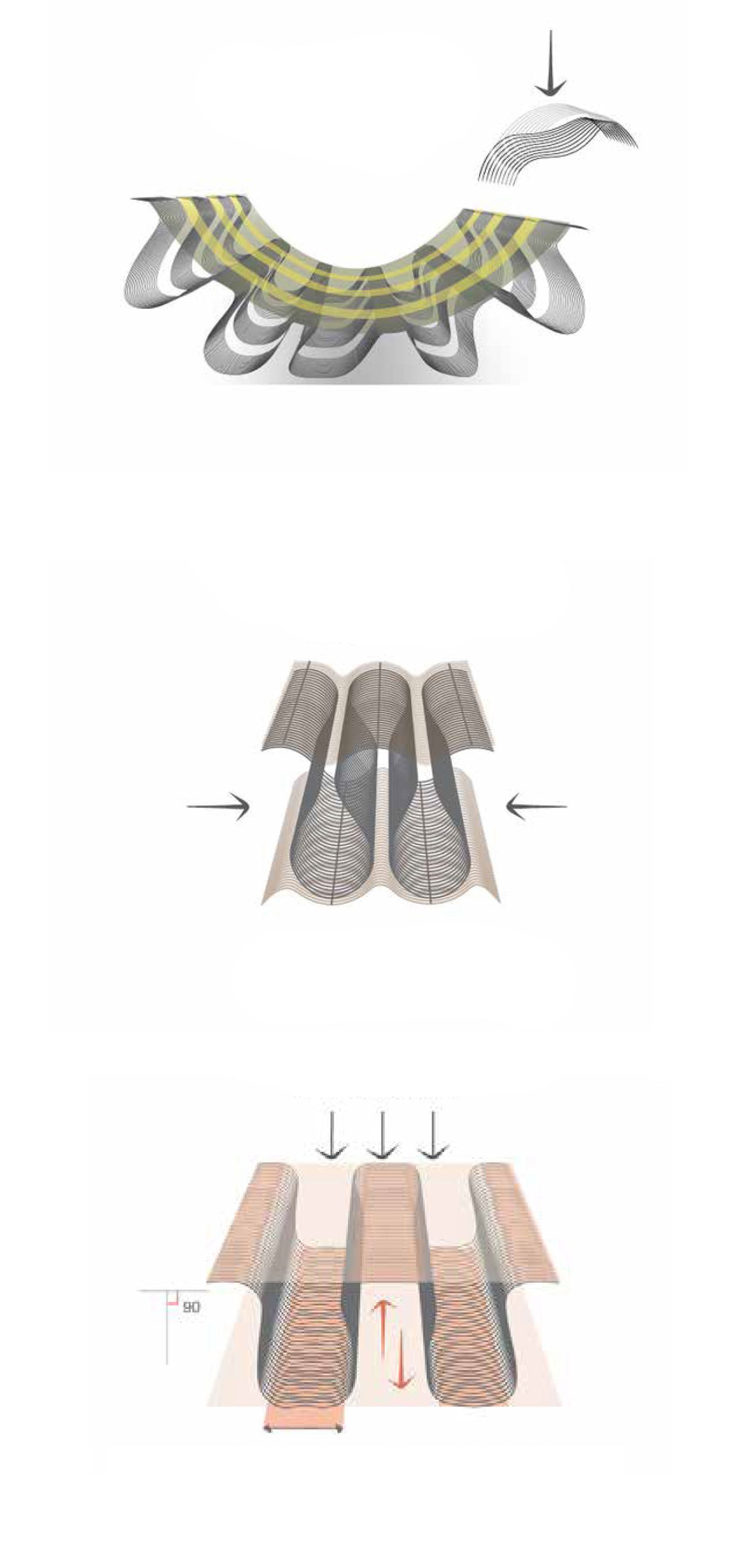
Few of the many mechanical properties
Performance
The performance of this 3D woven material lies in its holistic and self-sufficient architecture. Each structure functions as an intelligent, parallel environment—capable of sensing pressure, monitoring force distribution, intensity, and identifying potential pain points in real time.
This makes it valuable not only for cautionary applications, such as detecting risk of injuries, but also as a training tool that visualizes movement patterns through a single woven matrix.

Force vs resistance (in yarns) graph
Animation speculating some of the future implications
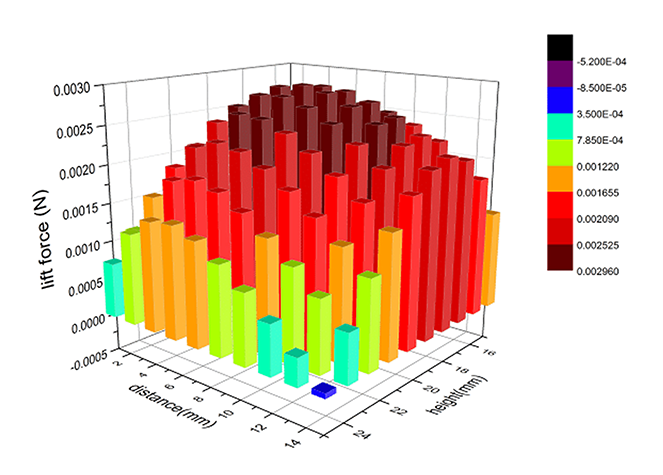
Graph determining the force on the 3-dimensional surface.


This thesis is formulated as part of my Master’s in Designed Objects
at School of The Art Institute of Chicago | 2023-25
Mentor: Ben Stagl, Ceci Gomez & Eric Hochkiss
LEFT-RIGHT-BITE !
︎
Are you conscious of your chew?
Well, you should be ‘cause your jaw remembers what your mind often forgets.
Well, you should be ‘cause your jaw remembers what your mind often forgets.
Balanced bite, One chew at a time
This playful headset is designed to train balanced chewing by addressing a common but often overlooked habit: subconscious chewing dominance on one side of the mouth. Over time, favoring one side can lead to uneven development of jaw muscles, facial asymmetry, and even disrupted sleep due to misaligned tension in the jaw. This is especially critical for children, whose facial structure is still developing.



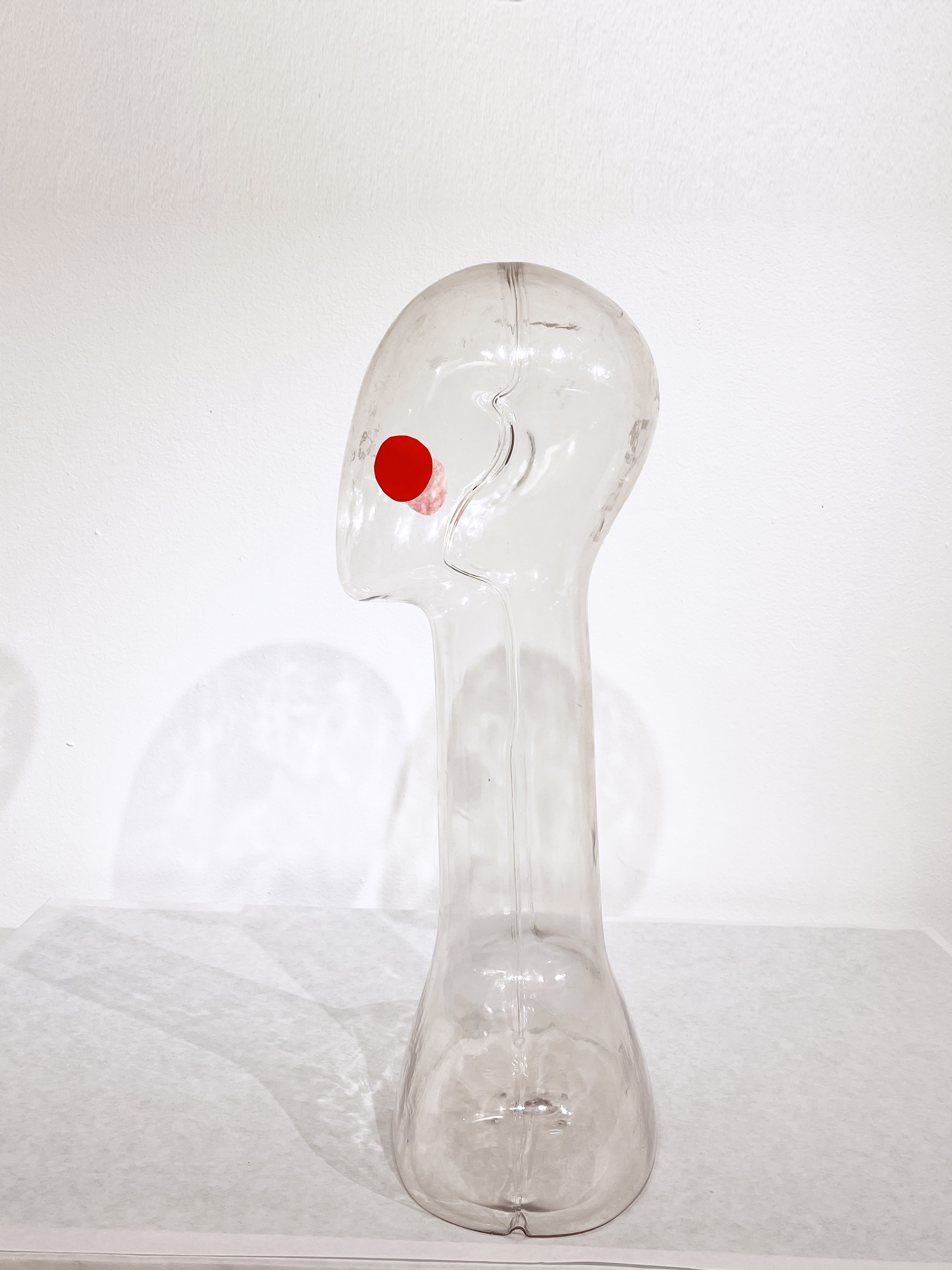
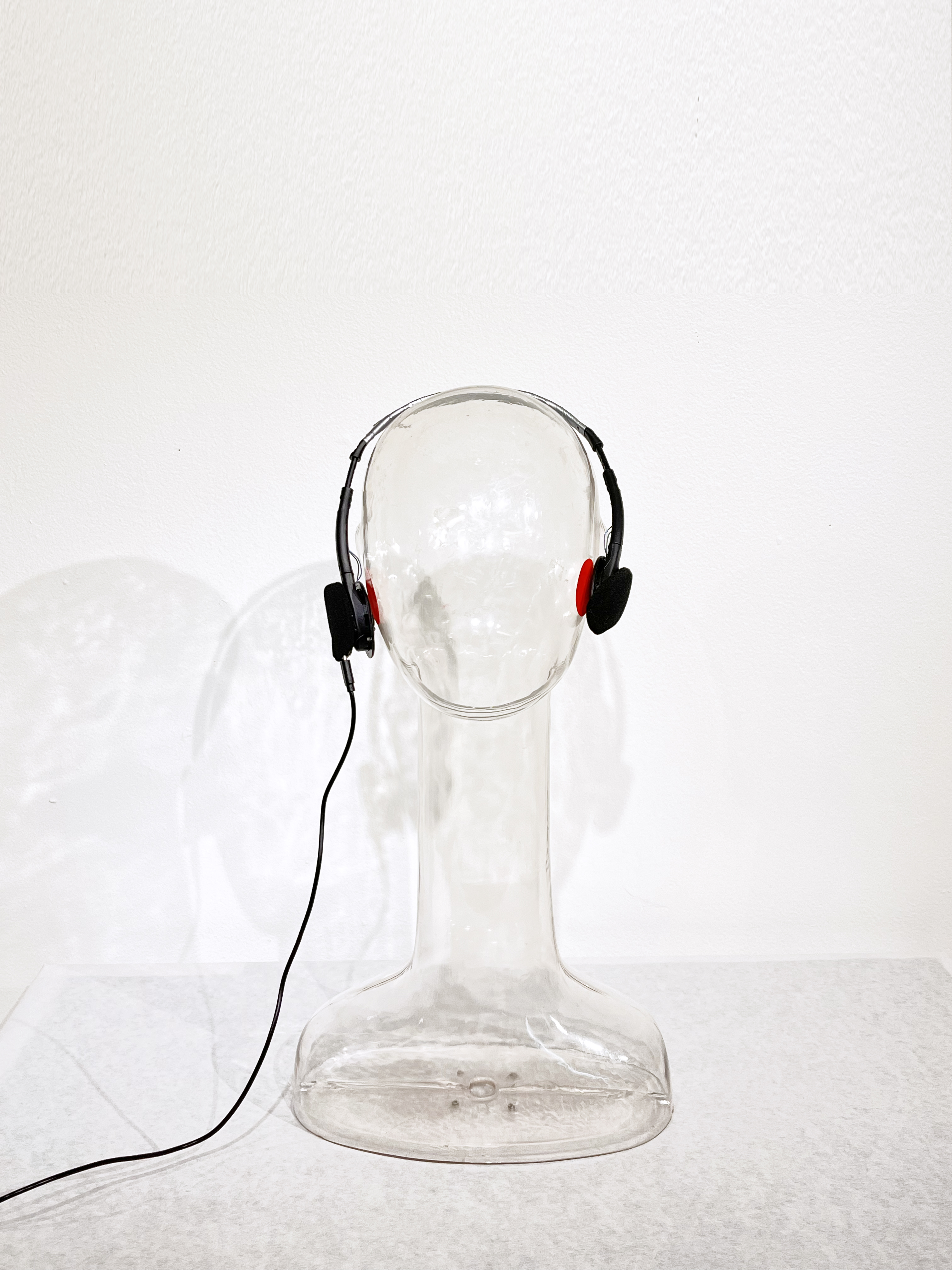

The device detects the respective
chewing muscle in action
Function
The headset uses independent sensors on both sides to track chewing activity in real time and provides immediate feedback through an engaging game interface. Users must balance visual bars—like a see-saw—by evenly distributing their chewing efforts. For younger users, the feedback can be transformed into interactive sound cues or customizable gaming formats that make training fun and intuitive. By turning mindful chewing into a playful and sensory experience, this device promotes symmetry, long-term jaw health, and better quality of rest, while building awareness of an often-ignored bodily habit.

VIDEO
.......will be out soon......
Interface Possiblities
Interface Possiblities
Some visual interfaces that’d make the headset fun and leveraging balanced chewing.


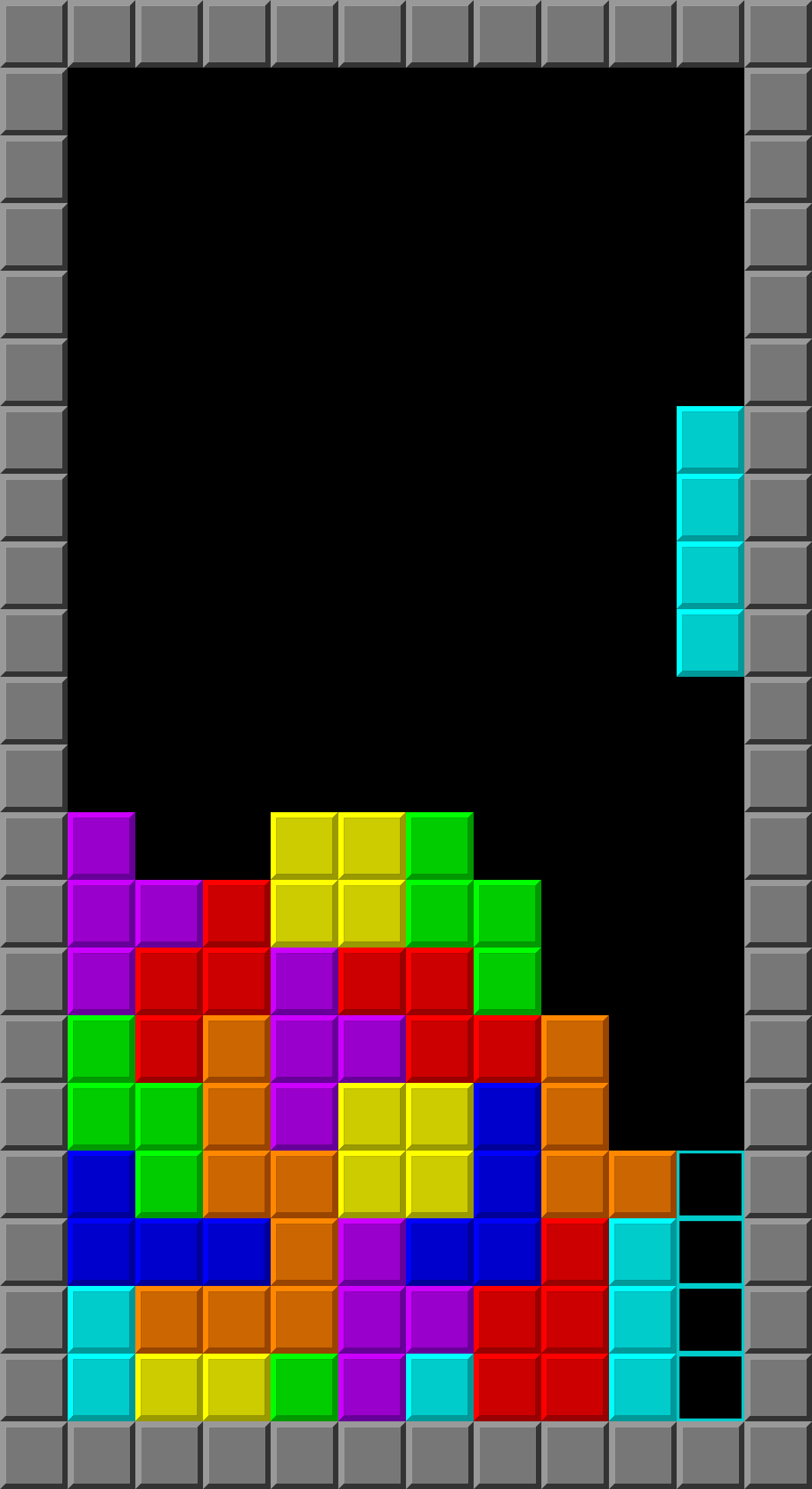
︎︎︎
Back to TopECHOES. UNSEEN
︎
Evil Eye | The gaze that gazes back
The near-future domestic environment is shaped by a new anxiety—an overstimulation of visibility. The self is constantly watched: by systems, screens, eyes, and algorithms. In the world of post-optimal design, this object redefines interaction not as service, but as presence.
Across Asian, Arab and Mediterranean cultures, the Evil Eye—or nazar—is a deeply rooted belief that a gaze can’t be nevtral, even unintentionally cast, can cause harm, illness, or misfortune. Talismans, amulets, and rituals have long been used to revert this invisible force and absorbing the weight of envy and attention.
This object translates Evil Eye as a concept to a post-optimal electronic object. It stands as a critique to one’s self reflection of their gaze/thoughts.
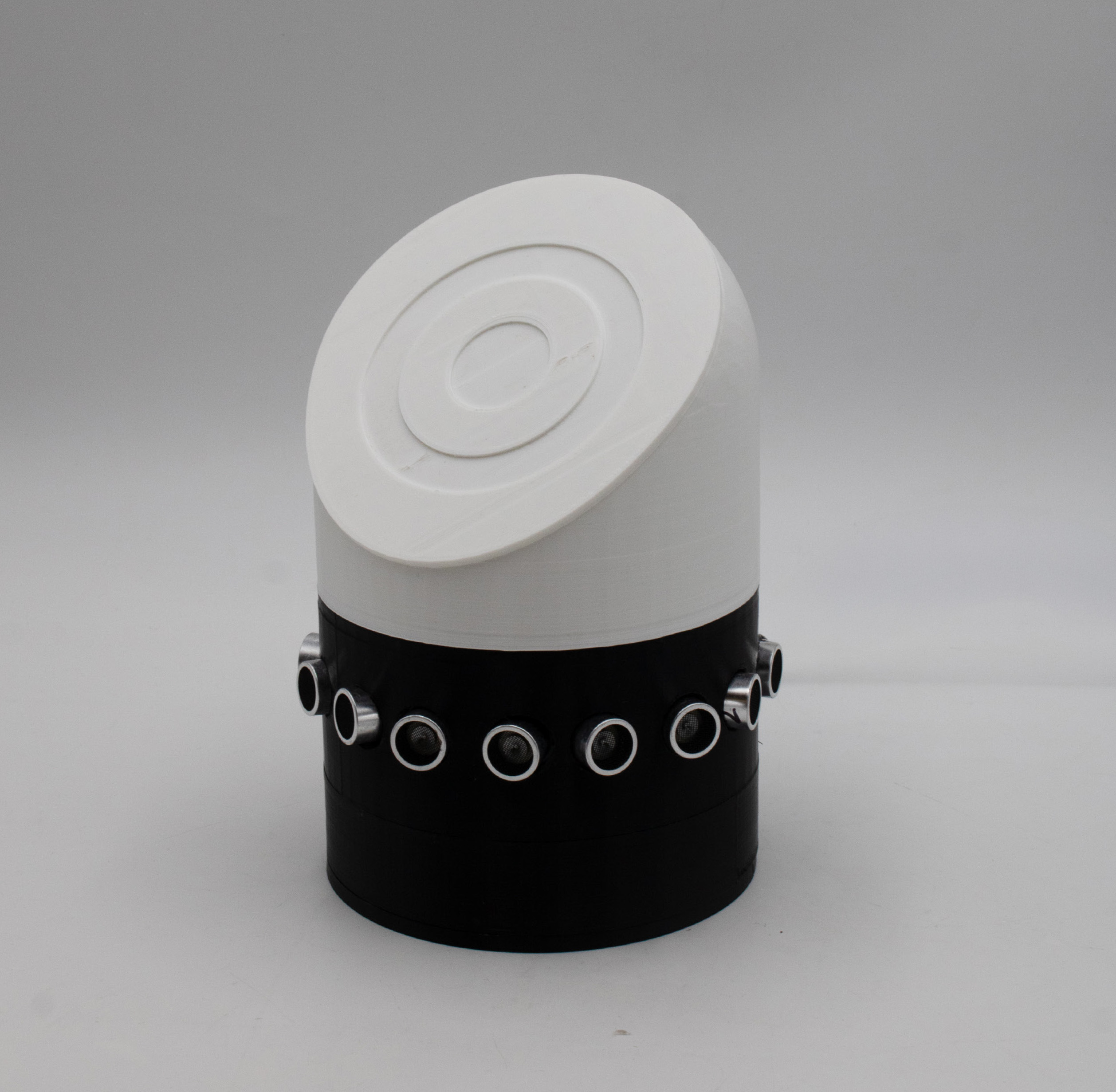
Function-
 The closer one moves, the brighter it glows, sustaining it’s responsive gaze by sensing proximmity
The closer one moves, the brighter it glows, sustaining it’s responsive gaze by sensing proximmity  The ultrasonic sensors all around the object detects closest proximmity and rotating motor mechanisms follows like its aware of your presence.
The ultrasonic sensors all around the object detects closest proximmity and rotating motor mechanisms follows like its aware of your presence.Process


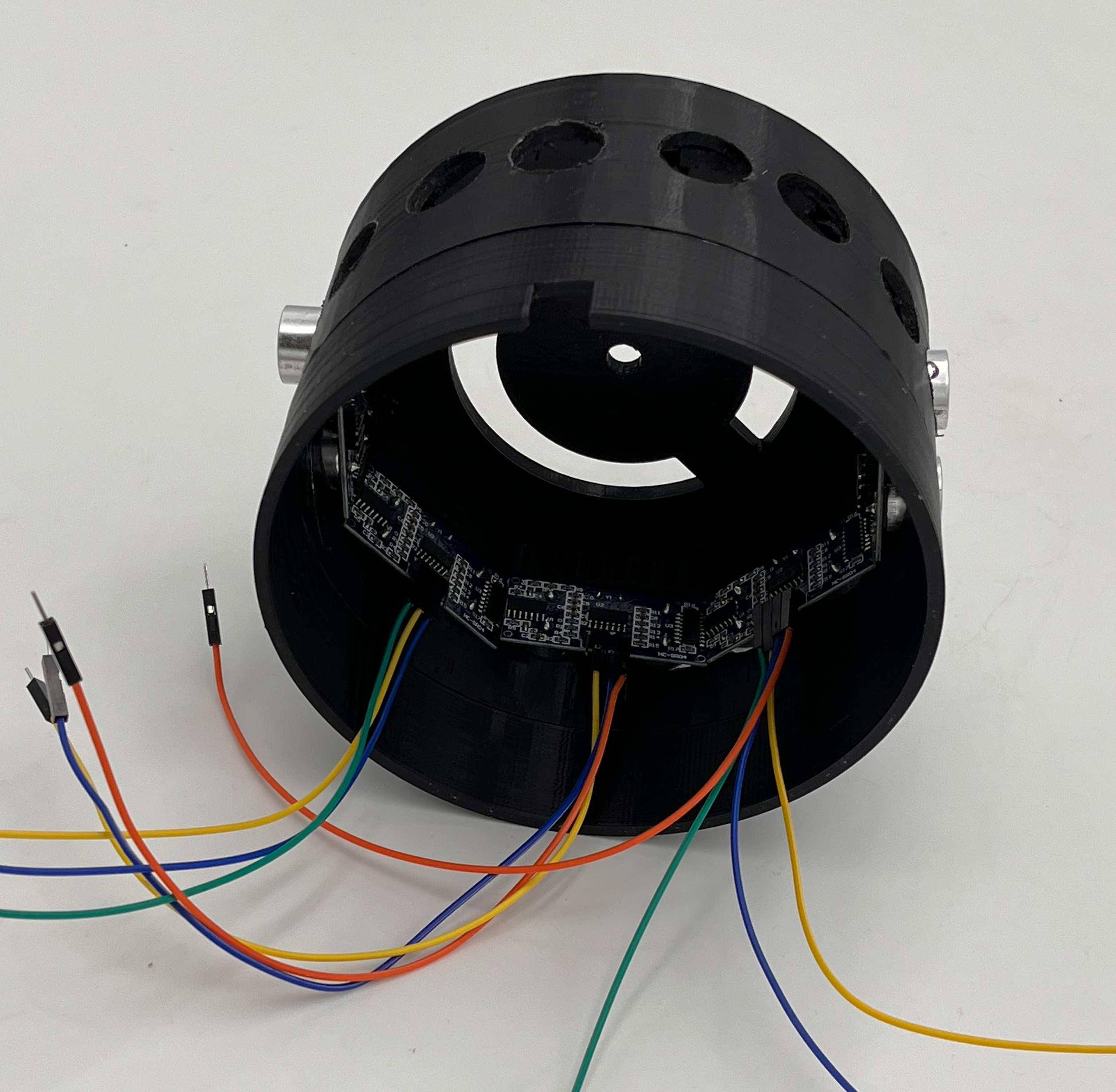
The object acts as a spiritual agent that channels unseen forces. As people move around it, they encounter their own visibility, their own gaze being met. Blending mysticism and technology, it challenges what we expect from electronics—asking not what does it do for me? but what does it make me feel?

︎︎︎
Back to TopREVAMP
MEDICAL APPAREL
“Reclaiming Dignity in Healthcare”
Redesign of Medical Apparel Where functionality Meets Modesty, Comfort, and Healing.”
Redesign of Medical Apparel Where functionality Meets Modesty, Comfort, and Healing.”

This work has been distilled from an intensive two-year body of work for ease of viewing and understanding.
Sponsor : All India Institute of Medical Sciences, Govt. of India.
2022-23
Brief
Medical apparel is one of the first point of contact with the medical facility. Despite the known impact of clothing on social identity, self-expression and belief system, the impact of hospital clothing on patient’s well being has been widely overlooked.
Passive acceptance of medical apparel can have a lasting impression on an individual’s mental health especially women patients. The importance of personalized and dignified care needs to be recognized by healthcare policies and practice. In this project the effects of patient apparel in the healthcare system is explored along with research on existing design interventions. It aims to design a set of functional medical apparel for varying departments that is both functional and comfortable for the wearer- pre, post and during procedures.

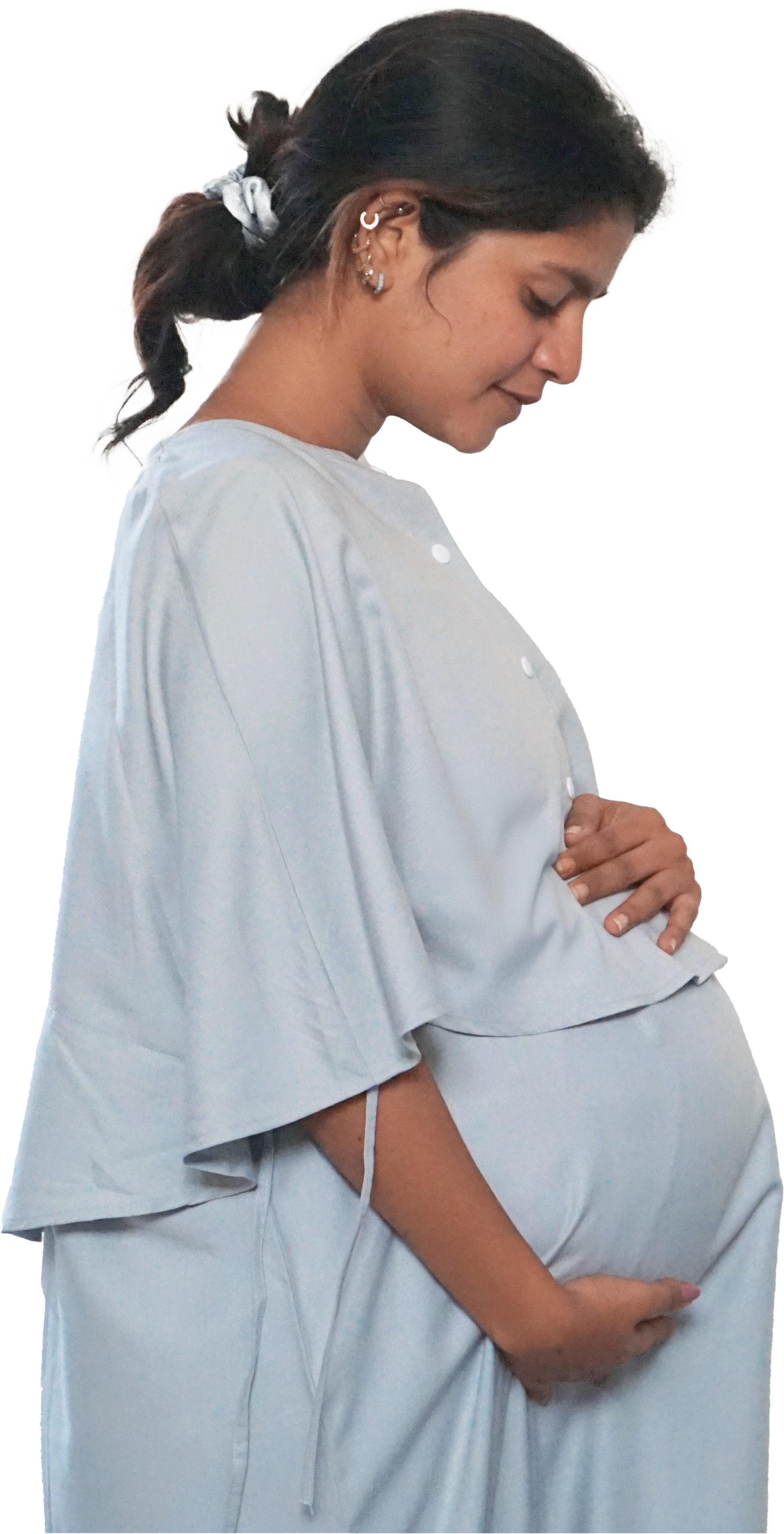

Location- All India Institute of Medical Sciences AIIMS, Bhubaneswar, India

Design Methodology
Designing a product within a larger system requires understanding all relevant and emerging factors, then narrowing in through a focused, empathetic lens. Desk research and secondary insights laid the groundwork for a deeper exploration into user needs. By engaging directly with extreme users, the methodology bridges broad context with intimate experience, ensuring each stage of design is rooted in real, critical moments of care.
Problem Identification
The Immodest Cost to usersThe impact of hospital clothing has got little attention even in contemporary times, despite the known impact of clothing in forming social identity.
AIIMS is a tertiary level, public hospiatal that treats over twelve thousand patients everyday over the country. In the hustle of treating patients on everyday basis, healthcare providers often oversight the significant impact of dignity in the healing process.
Hospitalization is not just a medical event—it often involves loss of- control, social support, and personal dignity. It can undermine well‑being, lead to feelings of vulnerability, and impede healthy coping mechanisms. Wearing the gown represents a shift in participants’ psychological state, a transition from a ‘healthy’ to ‘sick’ identity, which had implications on how participants felt within themselves.

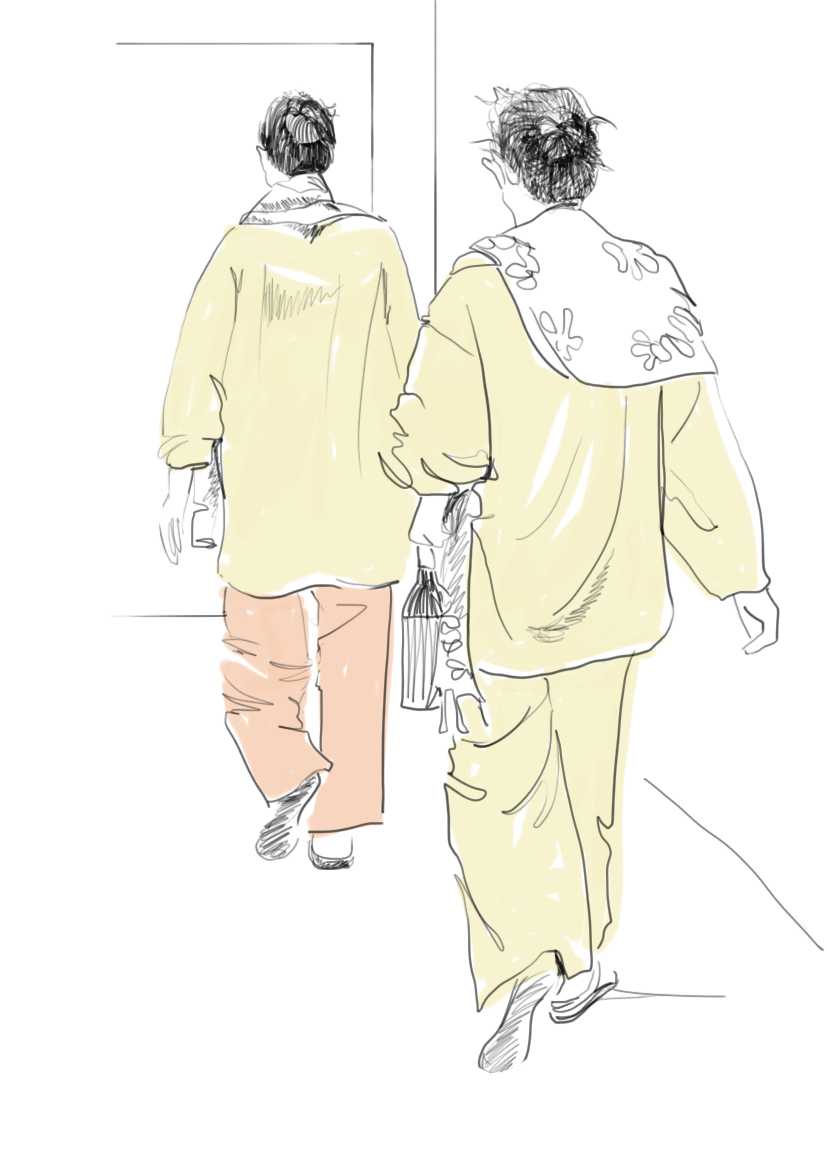
People with their personal items/sash for conceling themselves after been given the ward clothing.
This shows a level of discomfort with an added risk of infection.
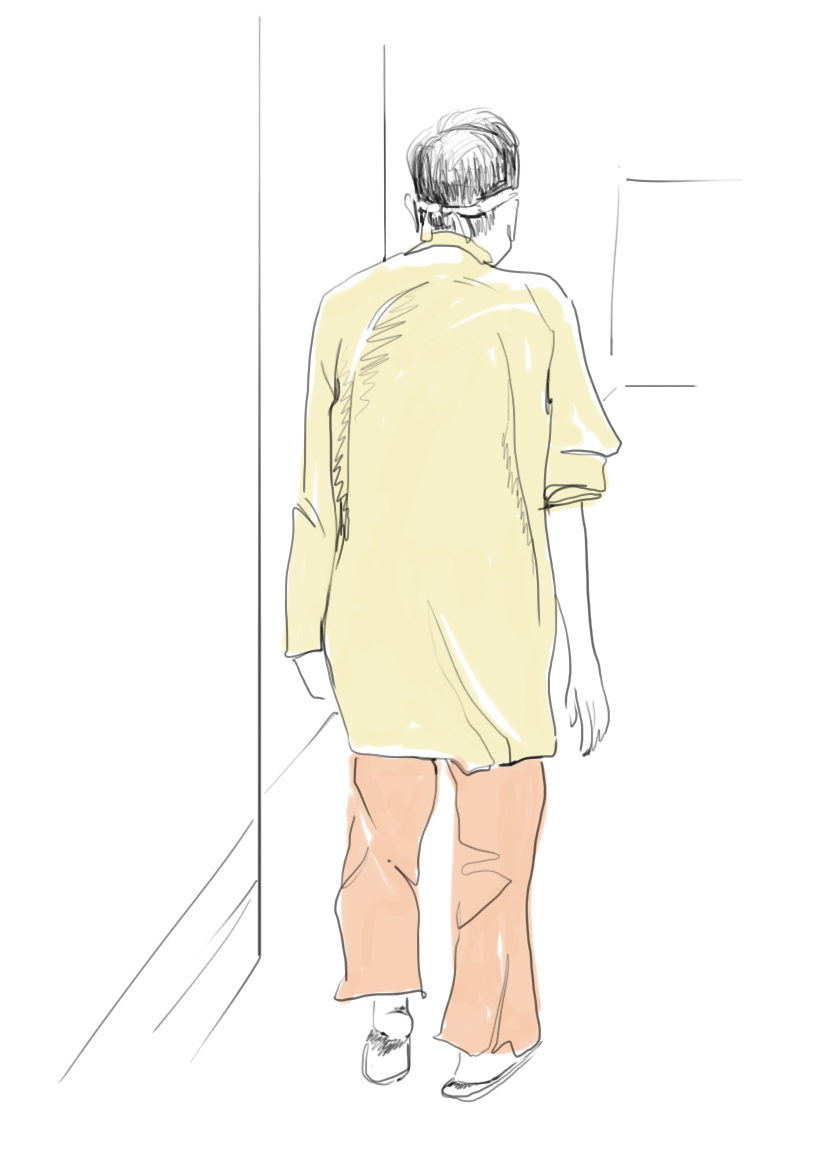 Old man wearing an ill-fitted set.
Old man wearing an ill-fitted set. Sleeve rolled up because of canola attachment.
 A man at the pre operative area (Urology) with OT gown
A man at the pre operative area (Urology) with OT gown carrying urinal catheter by lifting the gown up.
 Current maternity gown with accentuitated waistline that highlights the bust and the baby bump. She’s trying to conceal her top with a sash because of the same.
Current maternity gown with accentuitated waistline that highlights the bust and the baby bump. She’s trying to conceal her top with a sash because of the same.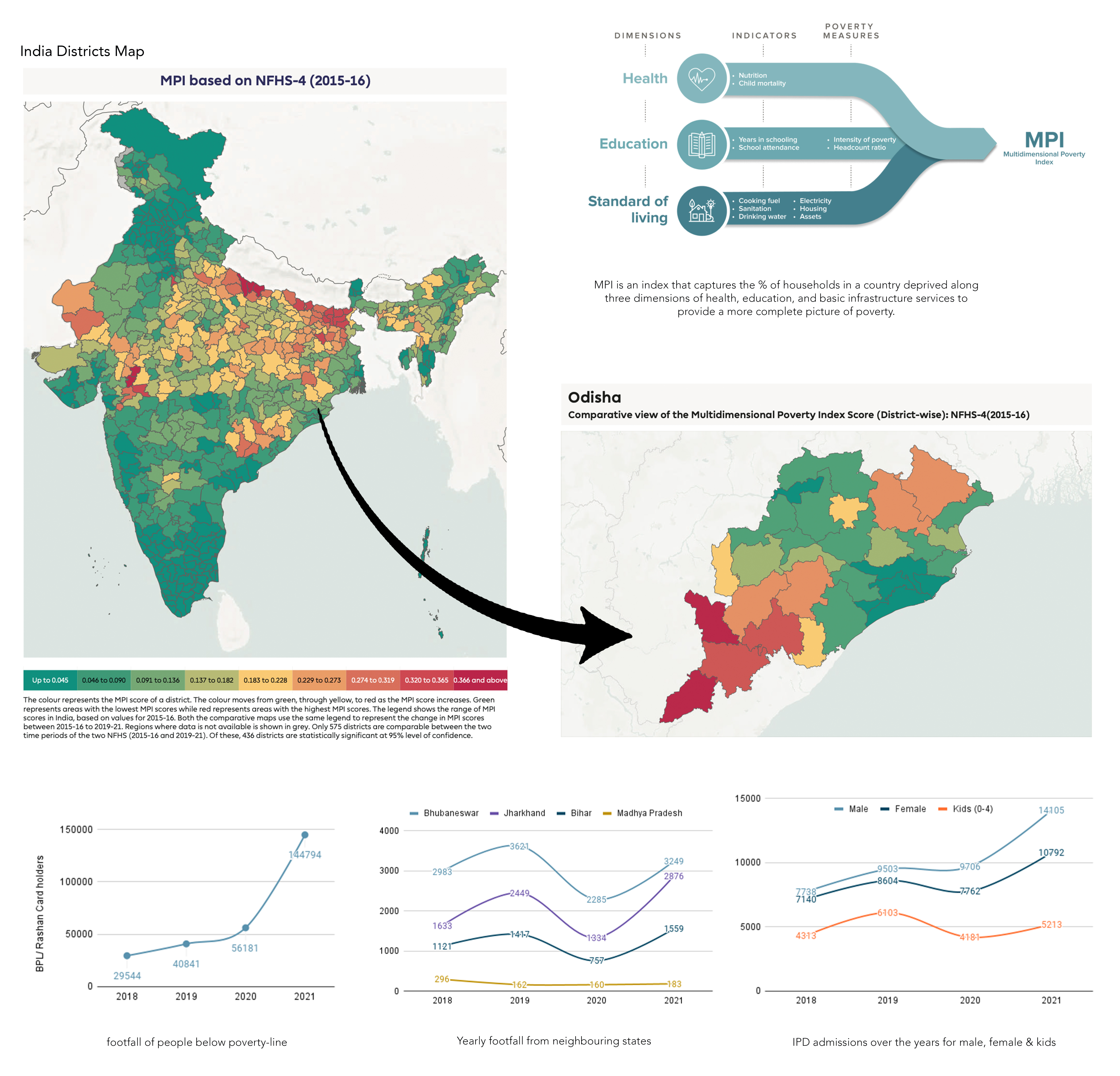
Primary Research
People & EconomyAIIMS Bhubaneswar is the only affordable and reliable tertiary level healthcare service around the region which makes it a major attraction for neighboring low MPI(Multidimensional Poverty Index) states too. Odisha is the eleventh most populous state in India and home to 42 million people. Poverty reduced sharply in the state after 2005, it is still very high. The state is home to 14 million poor.
A good proportion of patients from the neighboring states has shown a hike post-COVID. The general OPD and IPD admissions were relatively low during the pandemic but have drastically risen since, especially among women. In such overwhelming numbers, it’s clear that dignity has quietly taken a back seat.
Secondary Aspects
perceptible factors to considerCOLOR SCIENCE: A blood stain on white or any lighter color could create a blinding effect/ optical illusion for the operator. Therefore complimentary colors of similar tone (blue or green) is used to detect blood loss and avoid distraction at the same time.

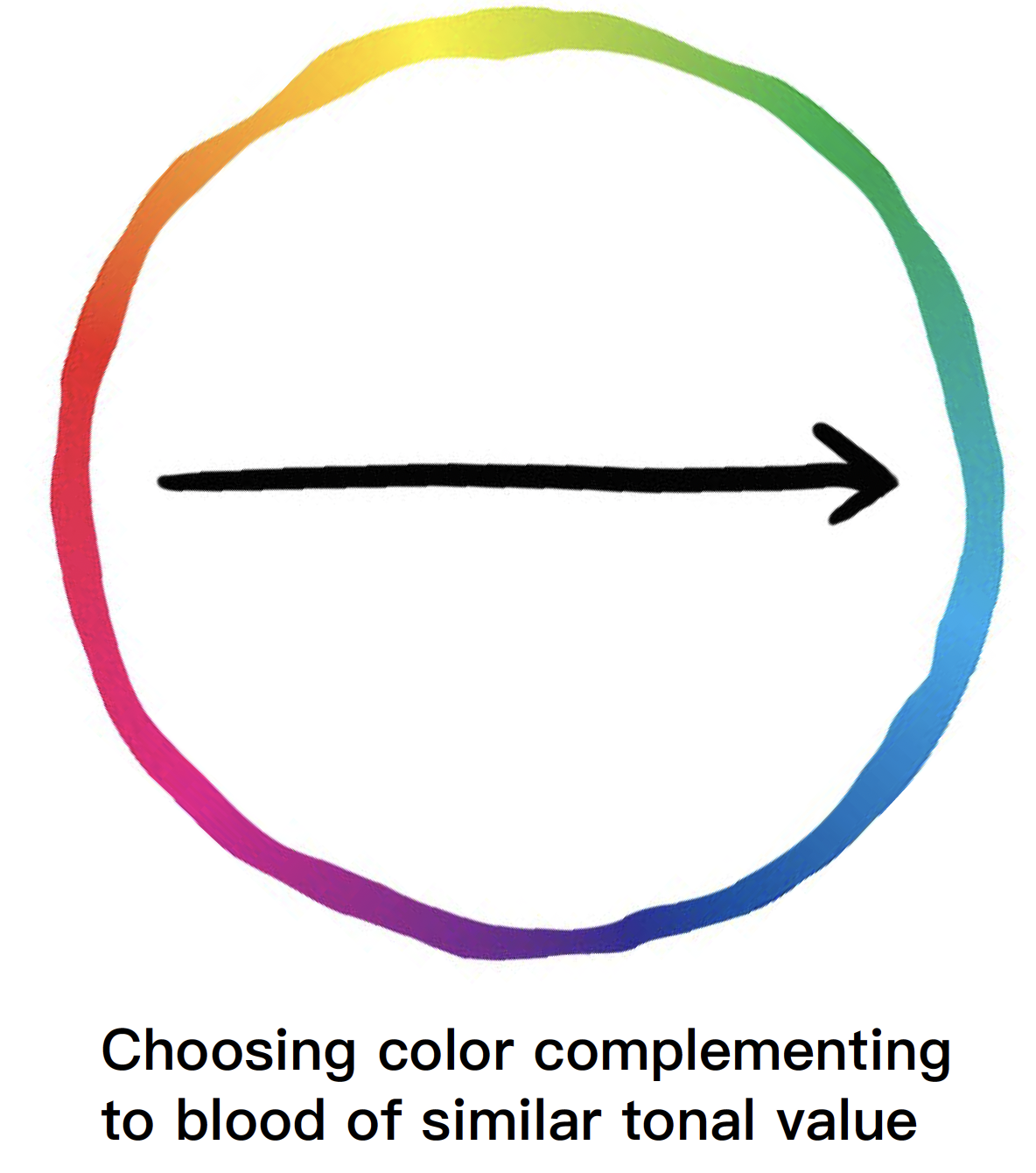


MATERIAL & SUSTAINABLITY: Hospitals generate large amounts of waste each year, with medical gowns being a major contributor. Entire gowns are often discarded for convenience, without separating components like fabric, buttons, or Velcro. This makes disposal time a key factor in material and joinery choices. Polyester-cotton blends are ideal for humid climates, offering a good balance of breathability, moisture-wicking, durability, and resistance to harsh washes.

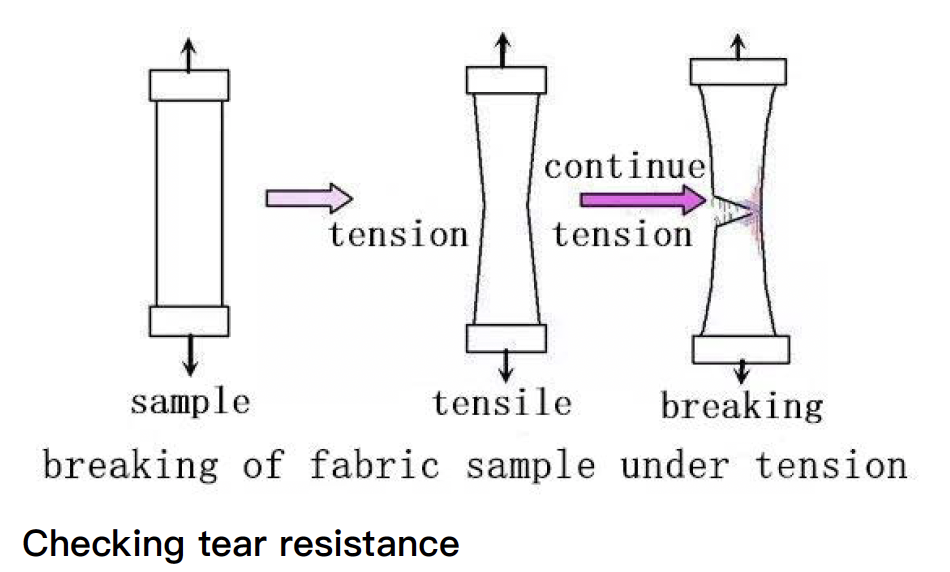
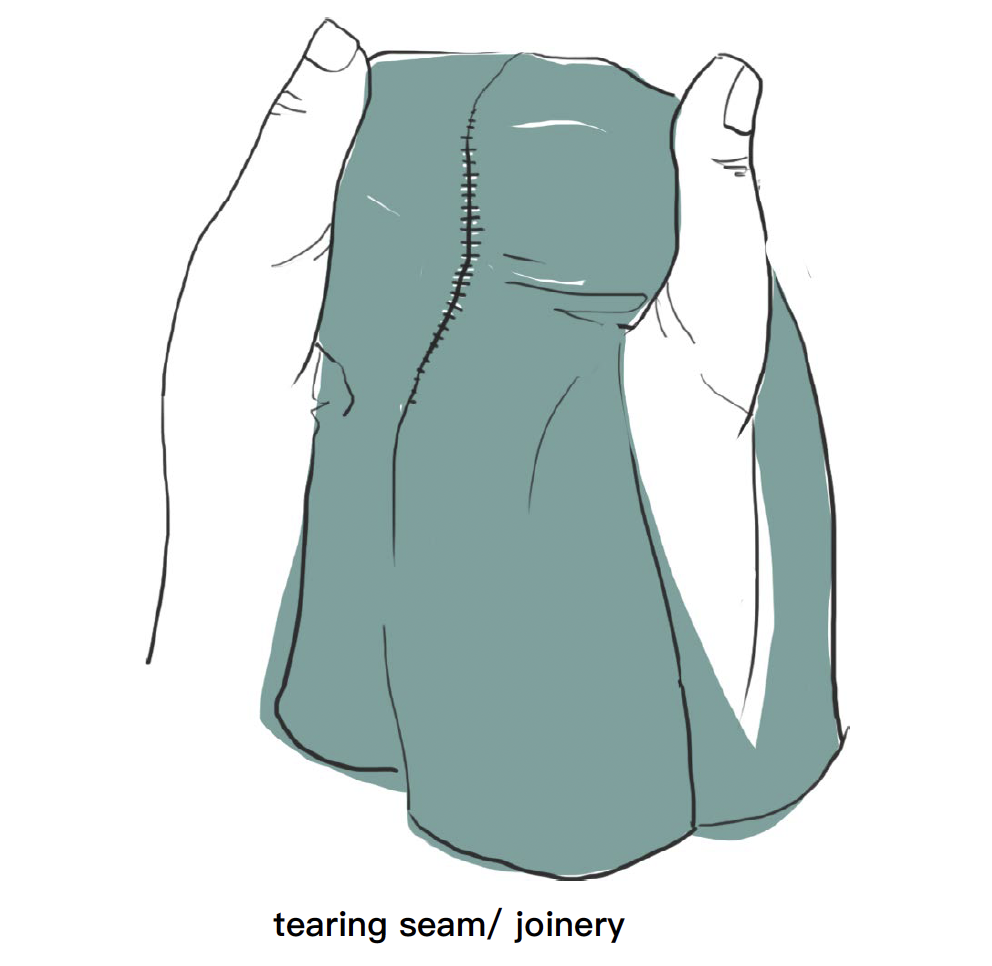

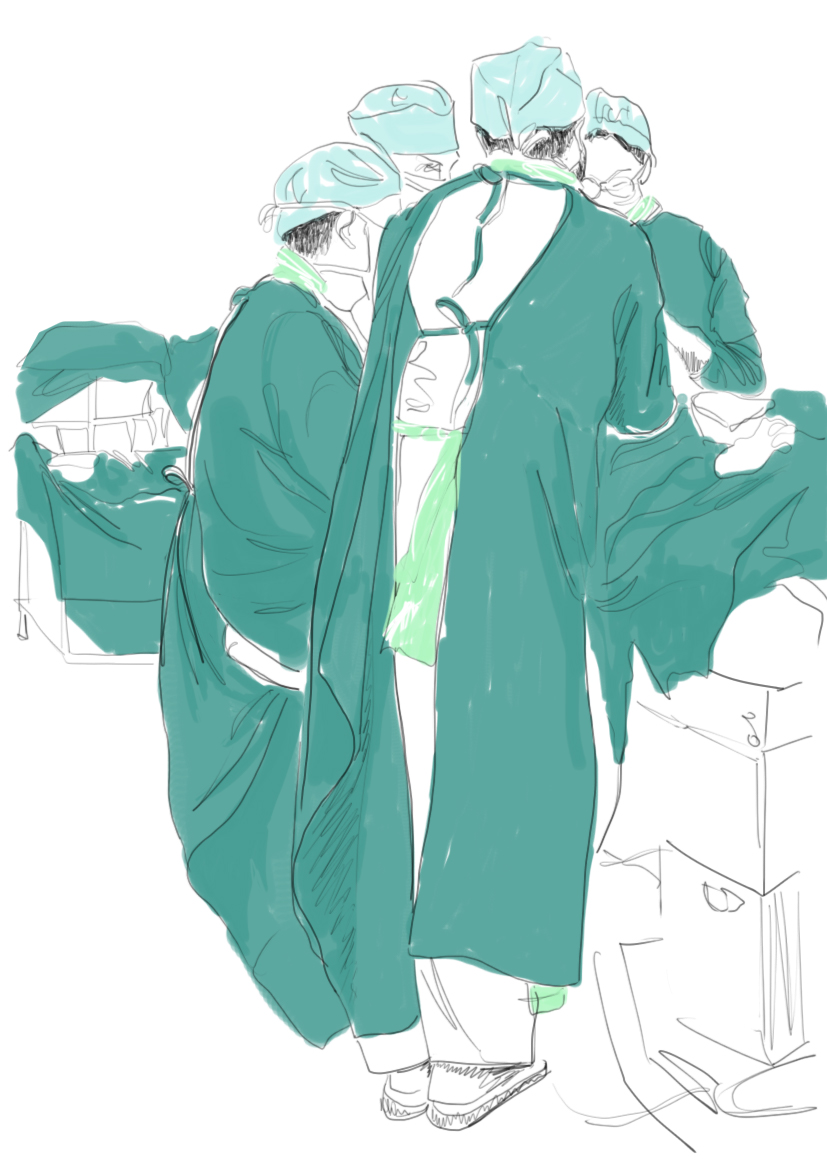
Intervention
Specific Insights & Pain Points- The hospital apparel can be broadly categorised into three categories- Operation theatres & ICUs, General wards and maternity wards.
- Need of design that is easier for people to put on by themselves, less revealing, more comfortable, better fit, warmer, and able to accommodate medical equipment.
- Functionality and comfort could go parallel. designed categories should facilitate device functioning (catheters, ECG, BP cups, epidural,etc) with minimal or no bodily exposure especially while the patient is conscious.
- The fit must be adjustable according to one’s body size and shape. Aim is to keep less overall sizes for the ease of circulation.
- The new designs should not just cater the patients but also the hospital system (i.e., low cost & maintenance, secure to use, and production friendly).
- Material is the key. It should maintain bodily and mental efficiency and a feeling of comfort in one’s culture & climatic condition.
Ideation & Prototyping
A thorough round of prototyping and testing on patients took place in live hospital environment before anything is finalised. A visit to laundry site was arranged too in order to understand the process, limitations, distribution and the intensity of the wash.
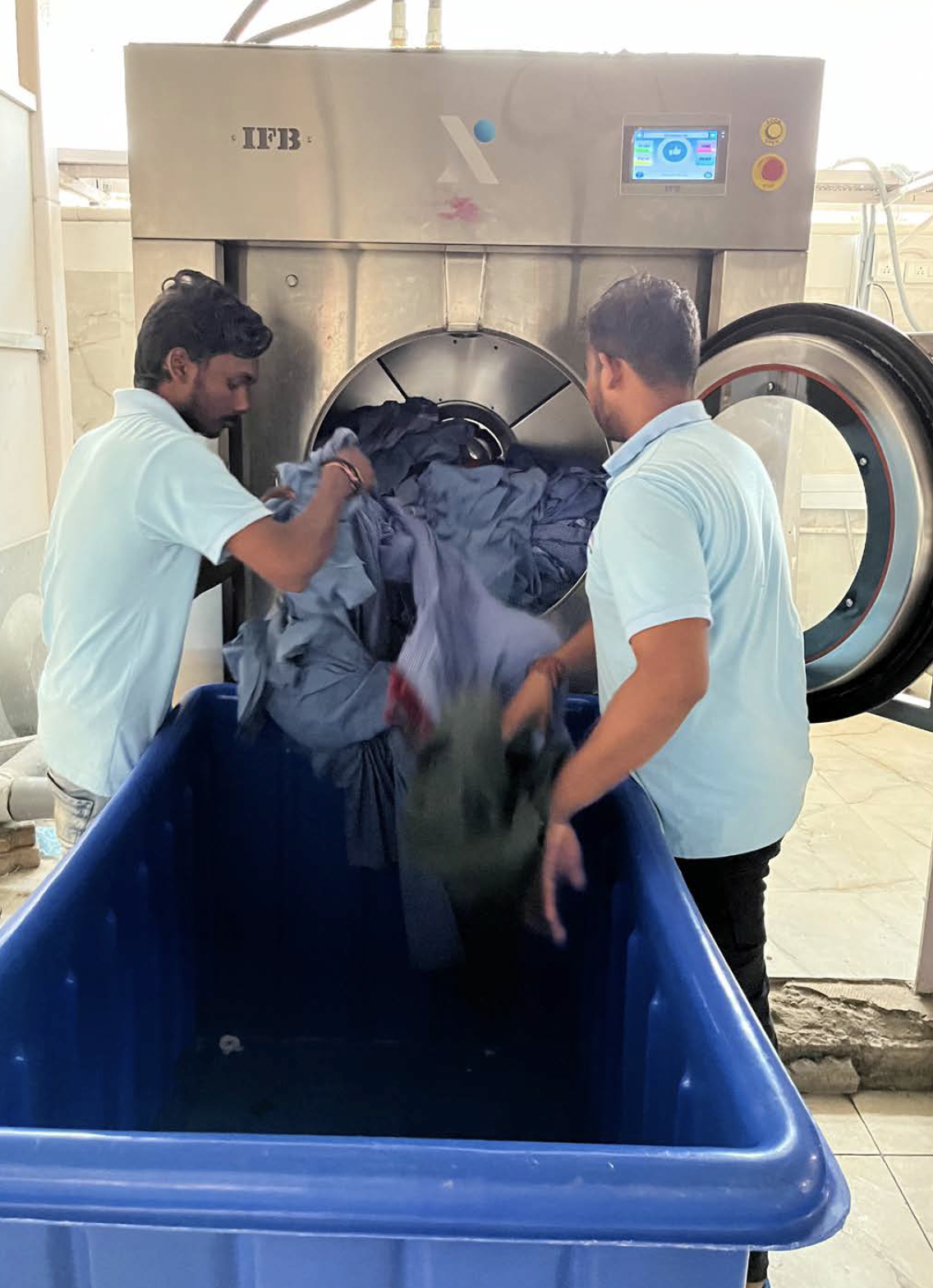

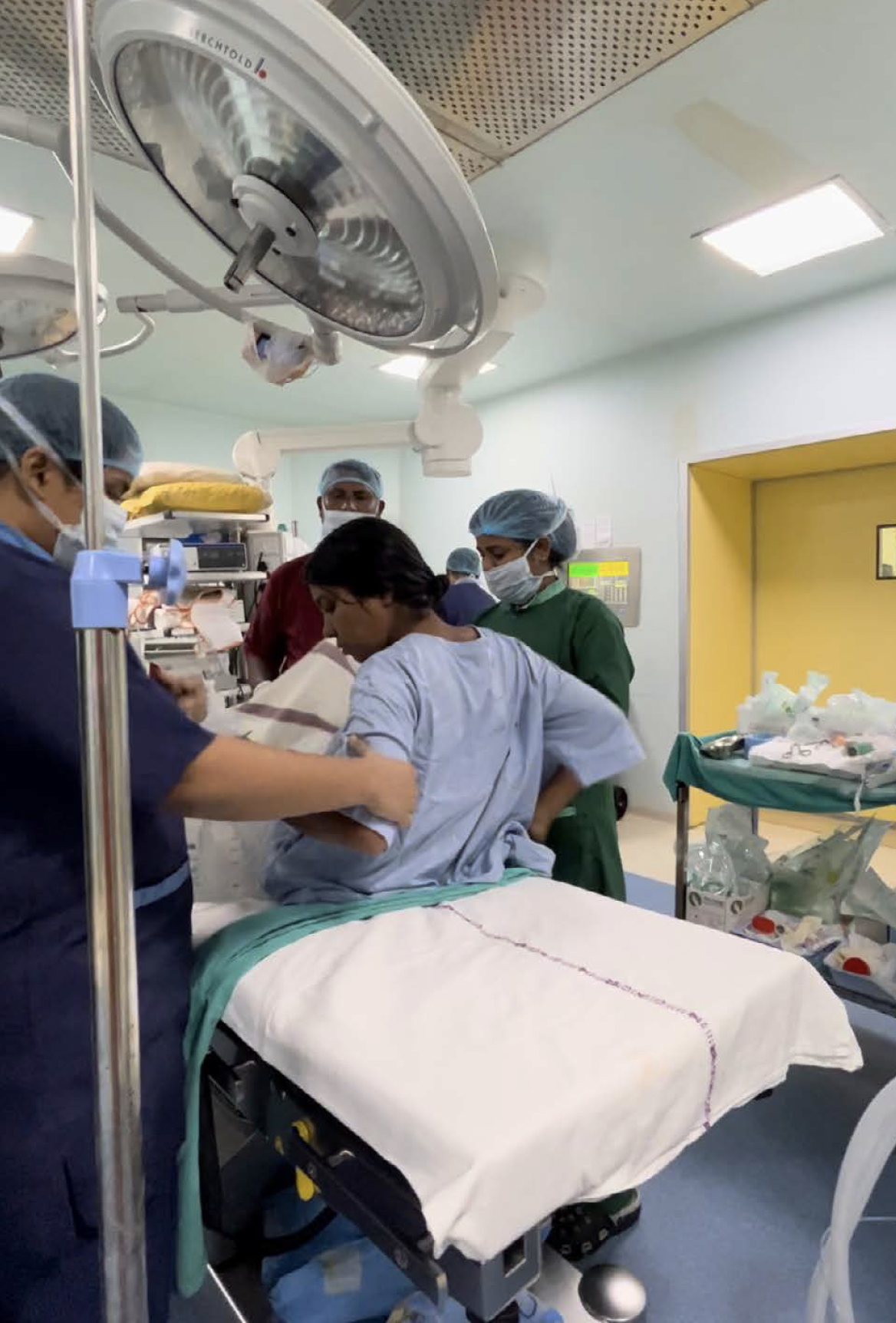



Pilot Design
For Respective DepartmentsAfter the live testing phase and gaining insights from the respective categories, the designs were improvised.
Maternity Ward
The gown has an underneath flap the exposes the whole abdomen until the crotch (for ease of examination and ultrasounds). The same flap has a drawstring that’s adjustable and ties into a beautiful drape for mother’s to be. The design also conceals the brests while they feed the baby post delivery.
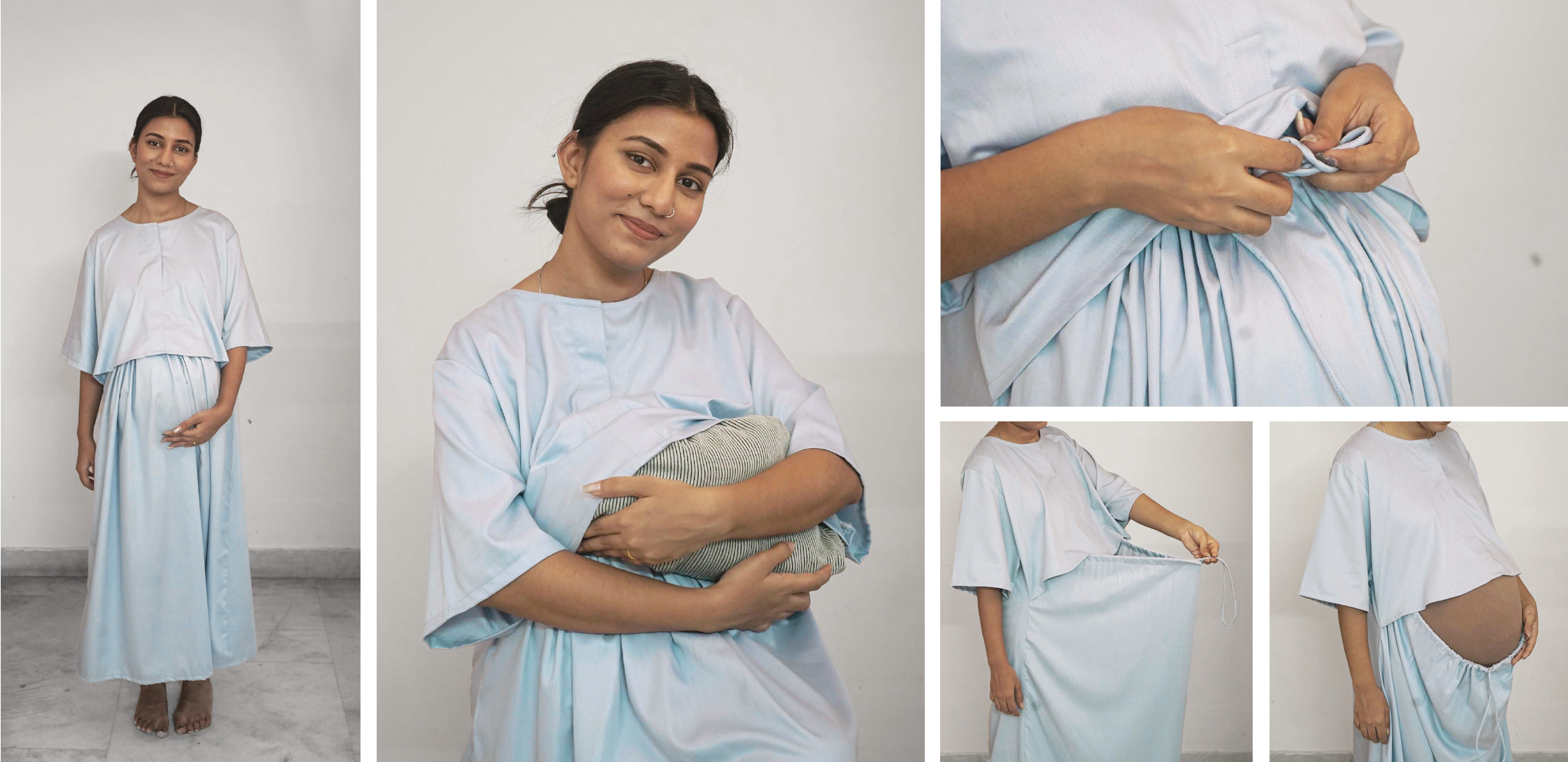
Operating Theaters
The two piece contains an Aangrakha inspired (cross-body drawstring tye) around mid-thigh length. Operators wont have to take the bottoms when operating the top half of the body and vice-versa. The sleeve opening is made underneath the arm that keeps the silhouette intact while still giving access for BP cups,etc. The overlap back-flap joining is done mid-back for easy lower back access for epidural’s, etc.

The tops of both OT and wards will be accompnied with the same bottoms. They are simpler to wear and has both elastic and drawstring for fastening. The side slits are for urinal/other catheters or can be used for hanging the same.

Inpatient Units
It’s the same but smplified version of the OT top. it’s a functional and relatively easy construction to understand for users. Allthough it’s made open from just front but can be worn the other way if required (eg. gastro surgery).

Product In Use
User Experience in real environment- Maternity Ward
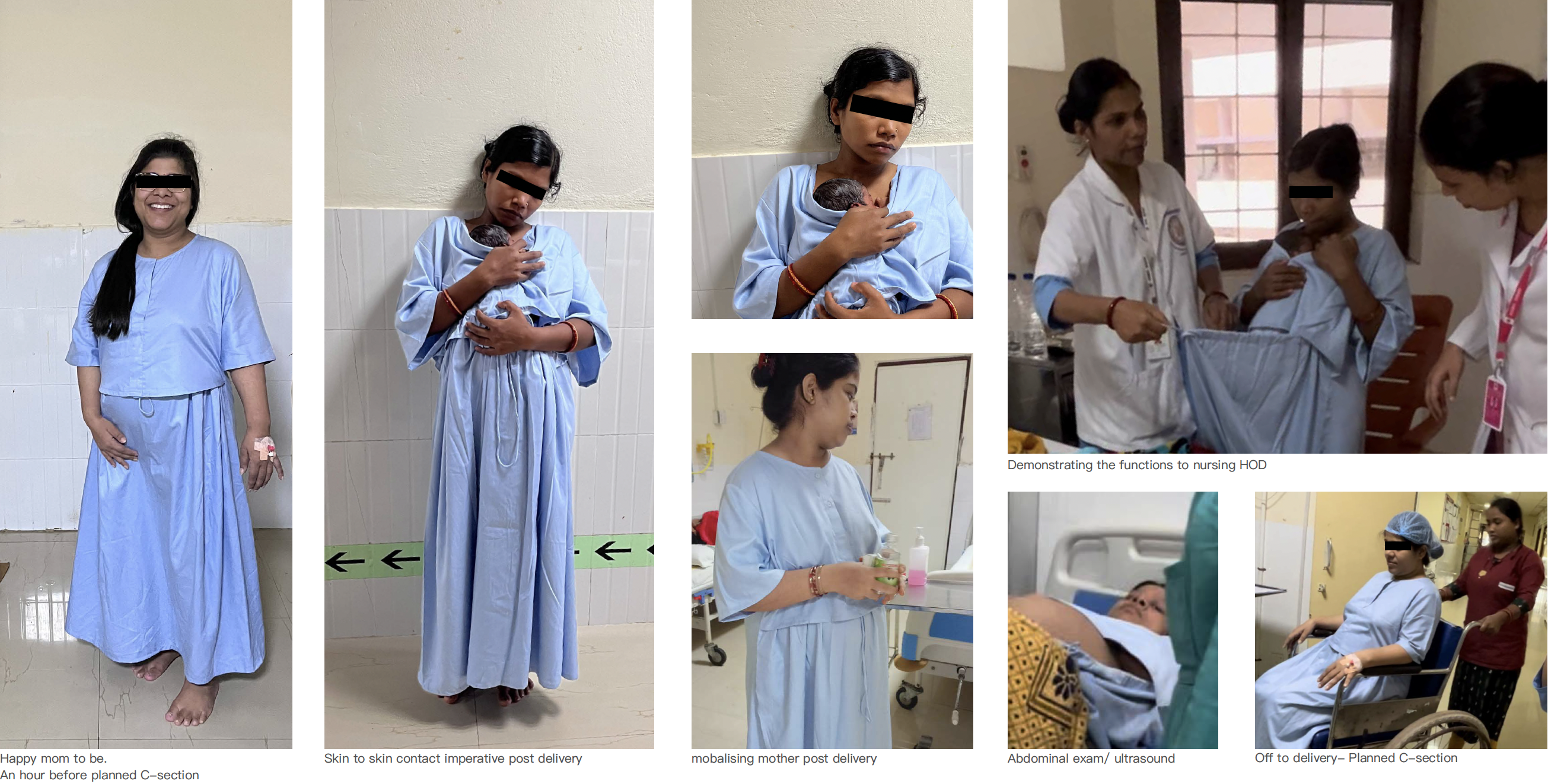
- Operating Theaters
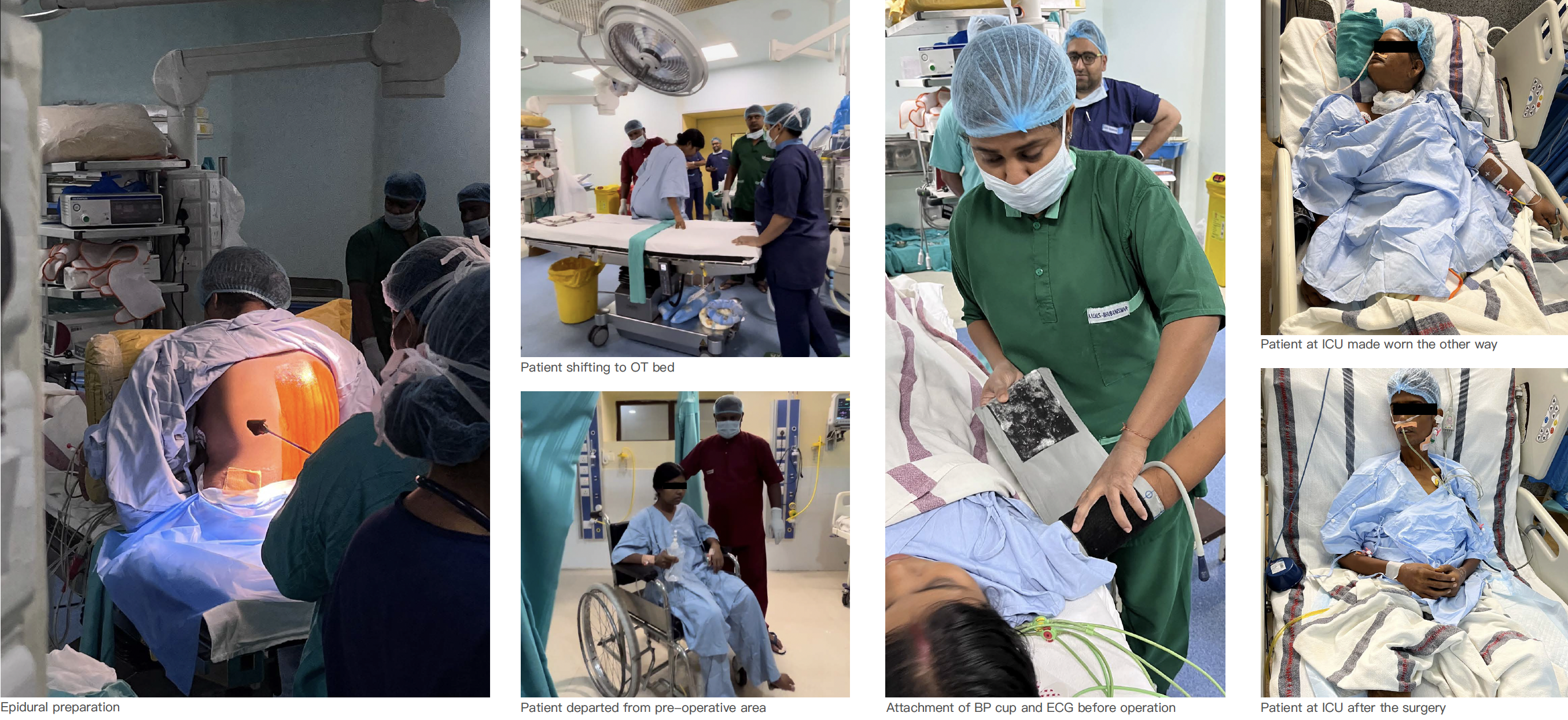
- Inpatient Units

“Design matters most where it’s been ignored the longest—like the hospital gown, where dignity was never a part of the brief.”
- Ravinshu Sagar
- Ravinshu Sagar
︎︎︎
Back to Top

Conceived as my final graduation project
at the National Institute of Design, India
In collaboration with All India Institute of Medical Sciences.
2022-23
This work was executed in a live, real-world setting to bridge design thinking with practice.
SURFACE MANIPULATION
Inspiration
Taking inspiration from a DRAGON FRUIT and interpreting it’s qualities/aspects using different conventional and unconventional materials and techniques. Opting an approach which stimulates one to find potential, research, develop concepts and innovate through various textile and non-textile material manipulation techniques. The aim is to develop surfaces with various inspirational properties that could leverage products as a whole.

Striped Rhythms
Replicating the proportion, distribution, interaction and scheme of colors of the fruit when looked from various aspects/states of use.
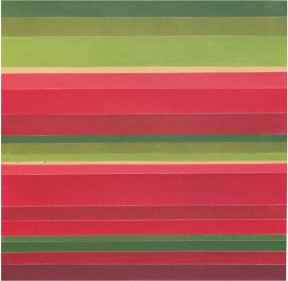

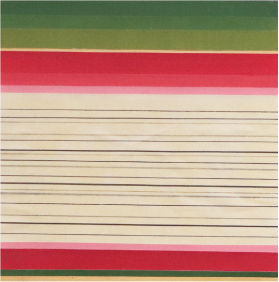
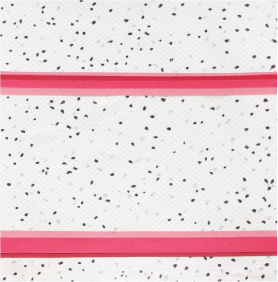
Paper Concepts
Exploring the forms and scales of the fruit using paper and other experimental materials. Some of these explorations are later replicated using fabrics.
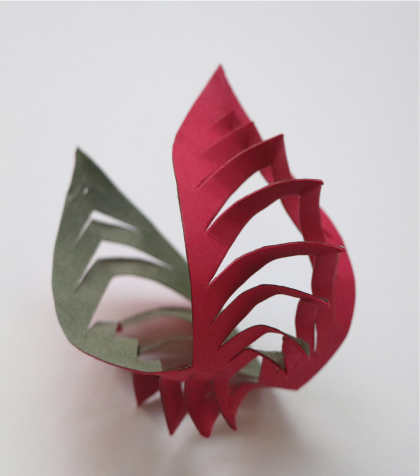
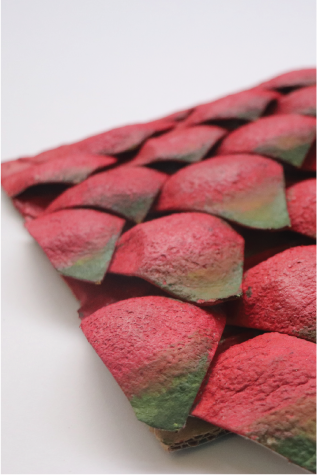
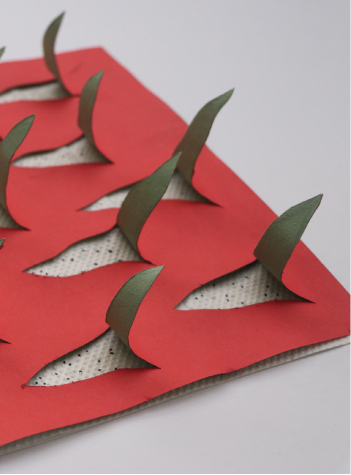
3D Model
After observing the fruit from all aspects, a 3D model is made to understand and replicate the form, texture, color by choosing the right medium possible.

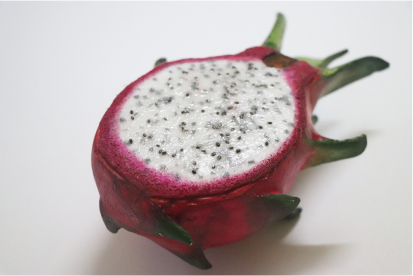
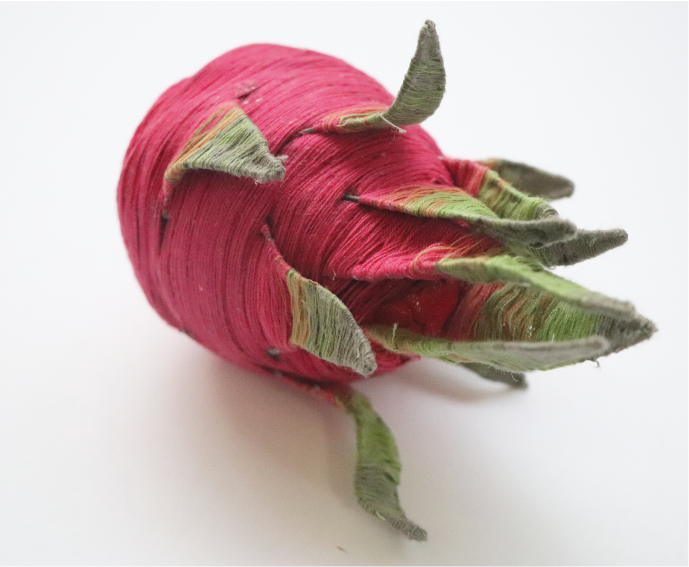

Colour Interaction
Taking the basic colors of a dragon fruit from the color palette and wrapping them together to get the mid tones of the fruit.
Geometry
The geometry of a dragon fruit is very similar to a polar Zonohedron which has varying pitch.This geometrical structure is made to show how a stripe of progressive quadrilaterals (units) repeats itself to form a dragon fruit.
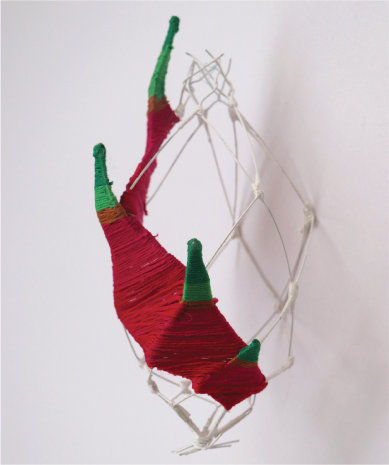
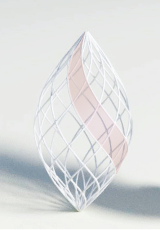
3D Embroidery
Embroidery on mesh depicting the geometry and the scoop-able property of the fruit.


Sewing Manipulations
Exploring surfaces by playing with combination of fabrics having varying properties (knitted and woven)


Knitted Surface
Knitted surface (garter stitch) with a shiny polyester yarn to give a glossy look to the overall surface. Then Black beads are sewed at varying depths to give the essence of seeds.
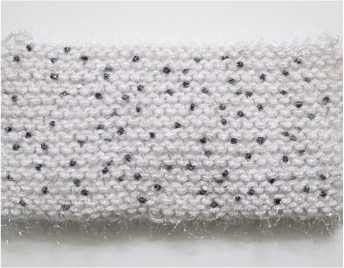
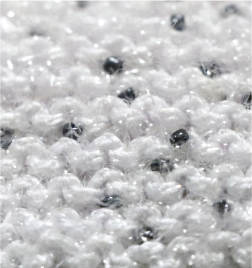
Product Visualisation
A pouch inspired from dragon fruit. Keeping the various properties like the layering of seeds at various depths, the surprising colors, etc.
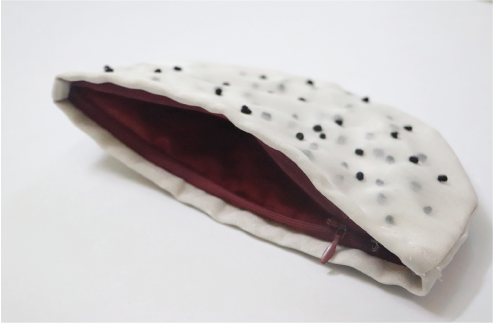
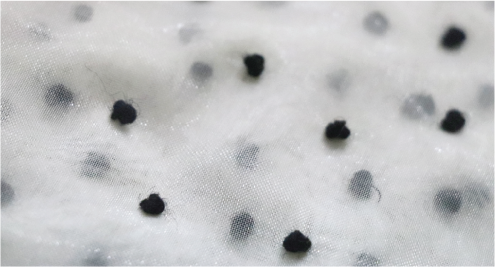
Applique Embroidery
A sectional view of the fruit is depicted on fabric using a embroidery frame. Cotton cords and beads are used as a detailing.

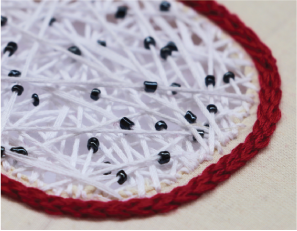
Woven Surface
Woven Striped rhythm by taking the color proportions and Interaction into consideration.


Final Panel
After understanding the geometry, a panel is made (2x4 feet) taking inspiration from the base view of the fruit. Each unit is made to elevate by filling polyfill under layers of fabric which creates a surprising interaction within the layers. The hide n seek play of colors are only visible when looked from certain angles.

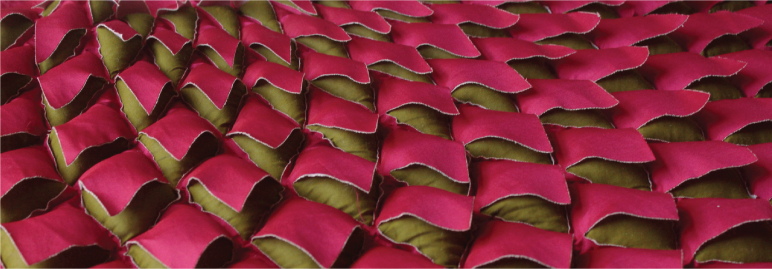

The flat base view of a dragon fruit has Fibonacci spiral in it and is an excellent example of geometry in nature. So, the same is replicated into a 3d surface where each unit grows in a golden ratio.
︎︎︎
Back to Top
︎︎︎
Back to Top
Back to Top
3D WEAVING
3D WEAVING
Emerging from a nontraditional experiment in 2019, this 3D weaving project layed a foundation in shaping my master’s thesis “Woven Sentience”.
This project extends weaving into a third dimension, pushing the craft beyond its flat form while honoring its deep-rooted tradition. By combining conventional and unconventional materials, the structures gain strength, durability, and performance, enabling complex geometries to be woven directly without cutting or excessive assembly. This approach reduces waste, lowers costs, and expands creative and functional possibilities, opening applications in industries where textiles were never imagined—bridging centuries-old craftsmanship with future-facing innovation.
Sample 1
Pleating using contrasting materials - where the bulging extra warp (Nylon) keeps the sample stiff and sturdy along the length -x-axis. The spacing between the bulges makes it bendable along the width -y axis. Each bulging unit comes back to the original state as the restoring force acting upon it brings it back to equilibrium.
This can serve as a protective surface covering the product from all around if the units are made smaller and closely packed.


Structure In Action -



Sample 2
Pleated extra warp is sandwiched between two layers of the fabric. In this sample the sandwiched nylon layer is woven together/ separated by two woven cloth layers. So even under high tensile forces, the layers remains separated by right angles.
This can have a great potential in the packaging and large scale shock absorbing industry because of its structural stability at higher machanical stress


Structure In Action -



Sample 3
Extra warp is sandwiched between the two layers of fabric. Each intersecting unit is bound between the layers of cloth at a uniform distance. It gives even cushioning when compressed/force acts upon it.
This sample can be used as a better and harmless cushioning alternative (forces acting for longer period). This can have a great potential in the cushioning and mattress industry.


Structure In Action -



Sample 4
Where multiple layers of cloth can be woven together at the same time. This sample is woven with two contrasting materials (i.e, thread and wire) and bound along the edges creating a hollow space inside. The whole structure is collapsible.
This sample can have great applications in large scale as it’s easily portable where the space can be made and managed efficiently.


Structure Upon Action-



︎︎︎
Back to TopElements of Color
Building color sensitivity and understanding the qualities and the great varieties of their possible effects. The many colors created through the combination of the three principal color elements known as the chromatic properties, hue, value and chroma, express the various color tones.
The following color interaction and composition exercises were done to explore these properties through different mediums.
The following color interaction and composition exercises were done to explore these properties through different mediums.
AURORA
Embroidered PortraitA portrait photography followed by a tonal value exercise. The greys were transled into matching color tones and hand embroided on fabric as final outcome. This project aimed at depicting the right facial contours through colored embroidery threads.


Beyond Opinions.
nor dark nor light,
she’s rather a mystery
of prismatic hues I see within

"The process itself became a light source,
gradually awakening the embroidered portrait to life."
Flat lay
Replicating the Color tones, texture & dimentions of a monochromatic flat lay composition.


Medium- Poster Colors
Academic exercise
Guide- Sonali Upadhyay
Academic exercise
Guide- Sonali Upadhyay
Painting Interpretation
Taking the pallet from Monet’s WATER LILY painting and replicating it’s colors and their propotions into a contrasting conceptualised artwork. Color propotions remains the same.


Academic exercise
Guide- Sonali Upadhyay
Tonal Transition
A large scale portrait transiting from warm to cooler colors keeping the color tones according to the facial contours.


Self Exploration
Medium- Soft Pastels
size- 3x4 feet


Madurkathi
This is an illustrative info-graphic document emphasing on the authentic making process of the reed craft of West Bengal, India. The hand drawn illustrations represents the organic nature of the process and the red bindi (third eye in bengali/hindu culture) pointing towards the active women contribution in the making of these mats.
This project was initiated with OBEETEE pvt. ltd. aiming at embracing the local livelihoods of West Bengal by offering the product range to the international market. This proves the craft’s worth on a global platform and would help sustain it to it’s true potential.


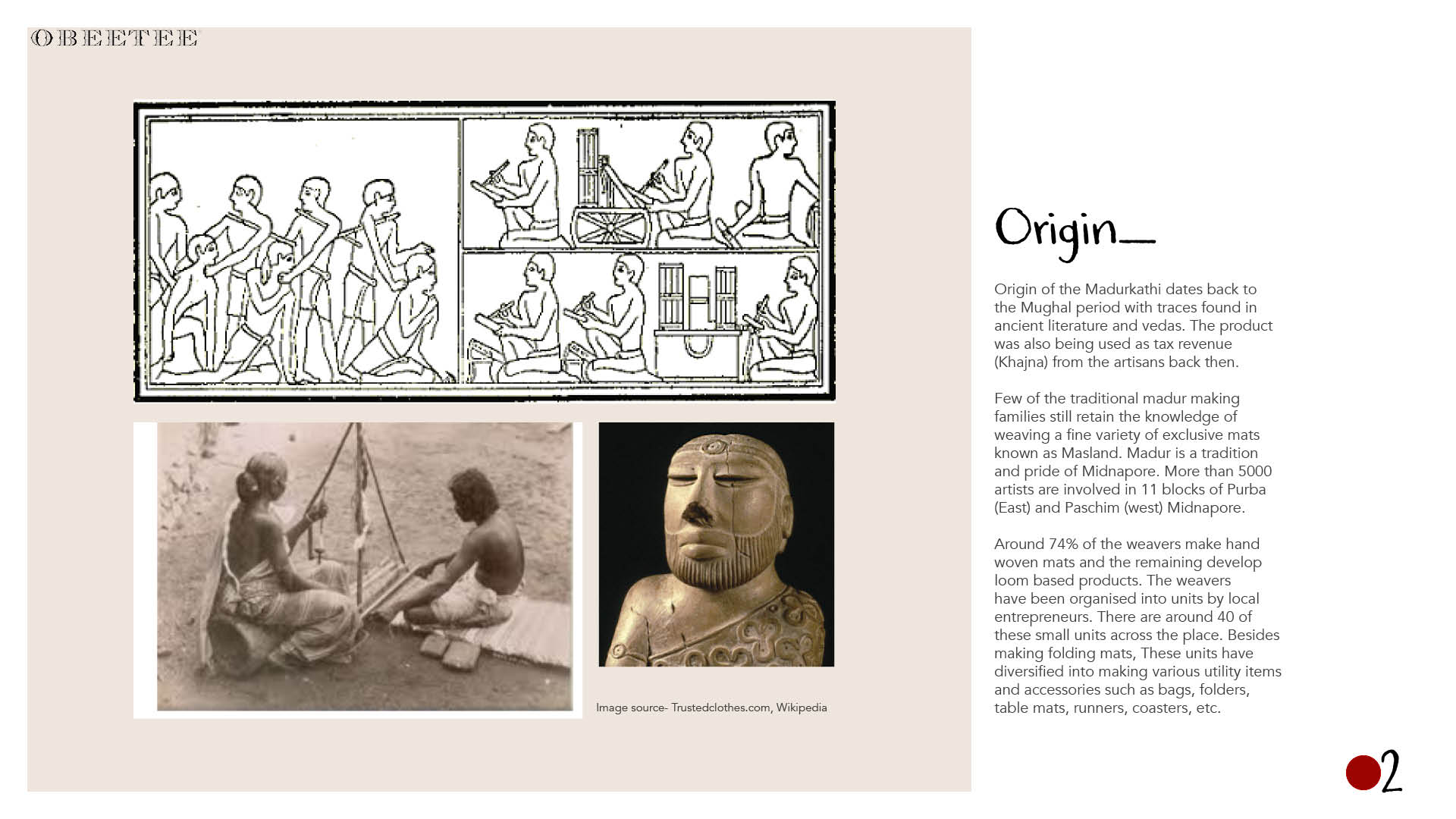












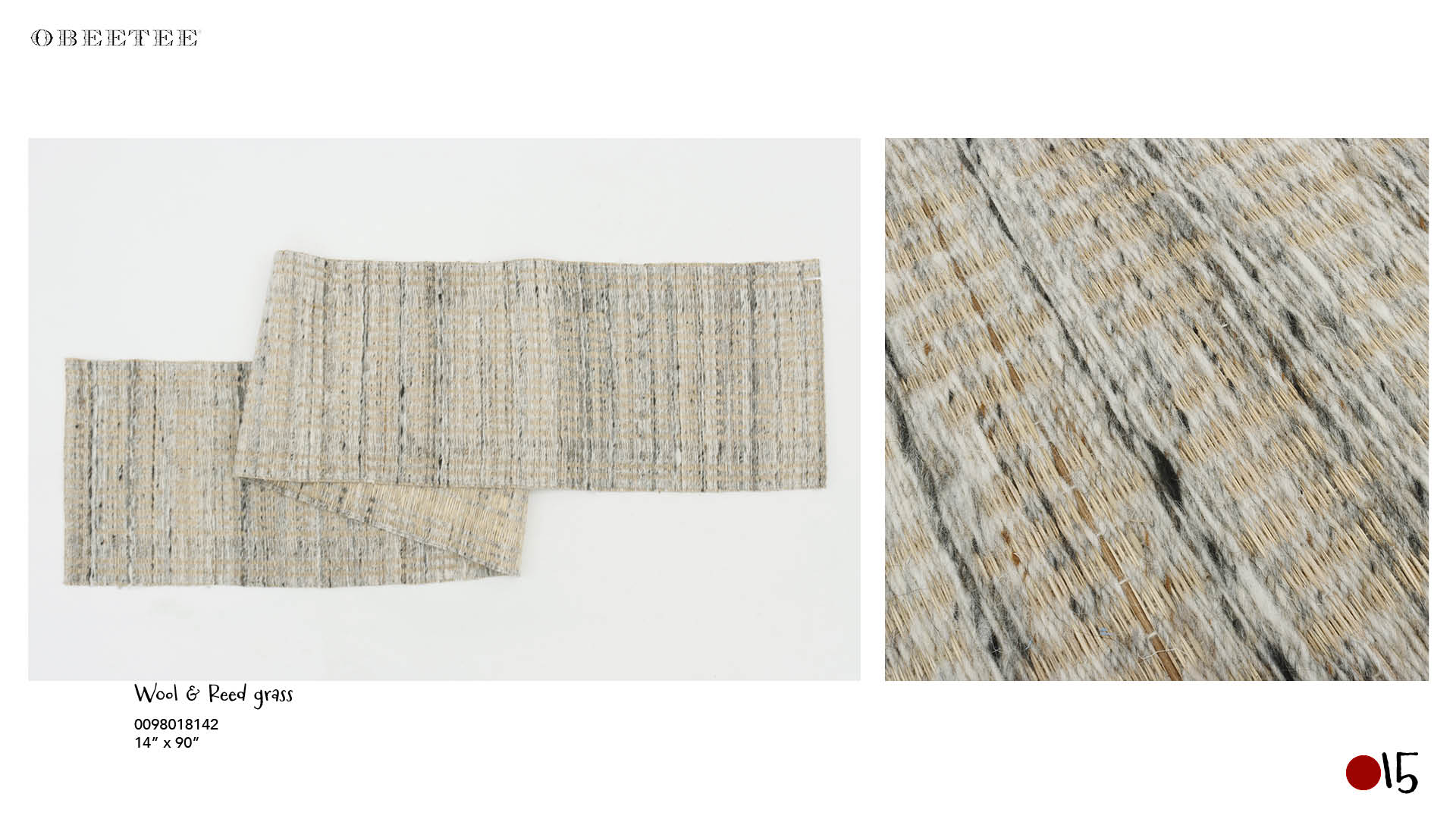


































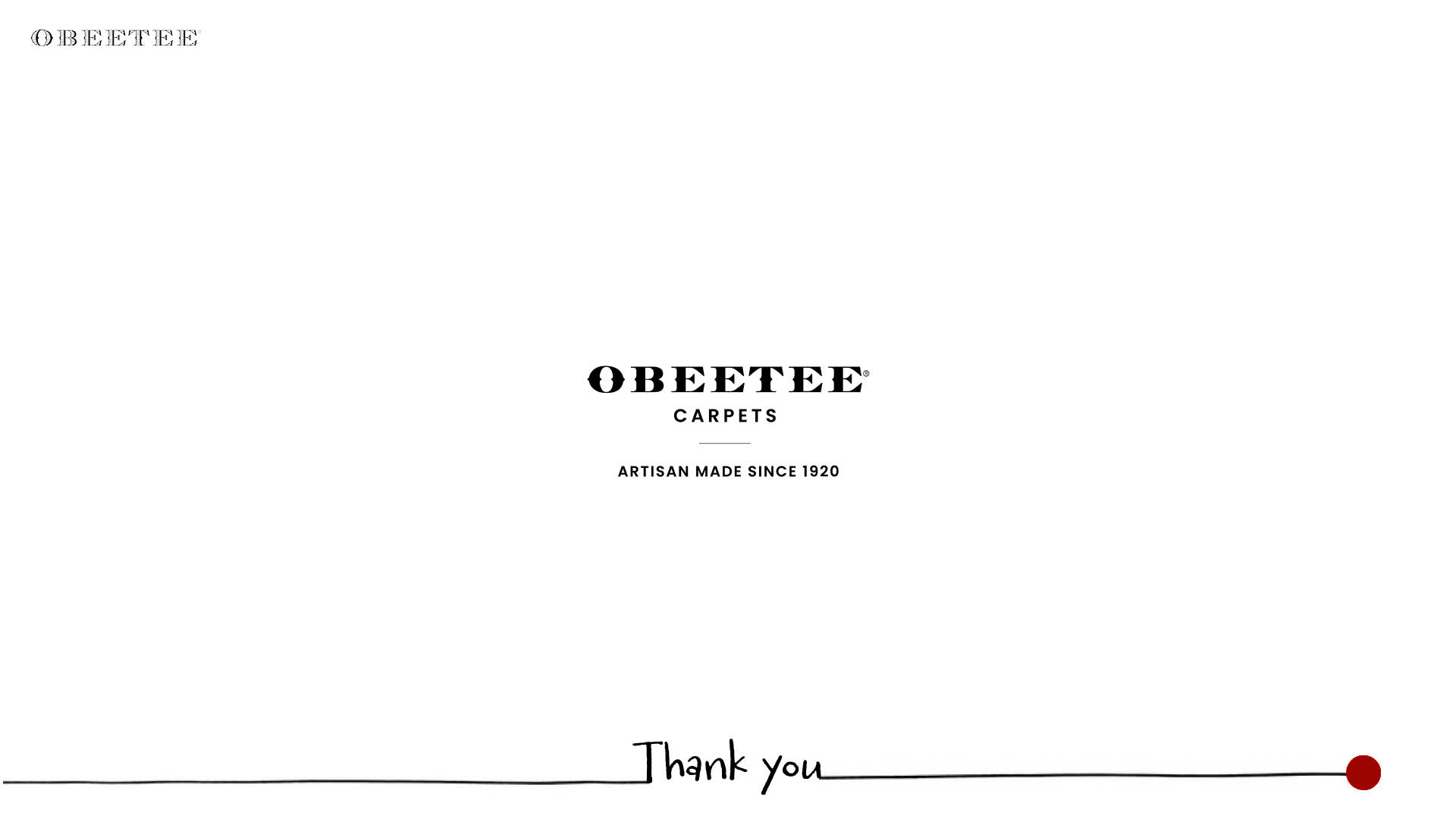
Official, Collaborative project (2022)
Copyright ©OBEETEE pvt. ltd.
Copyright ©OBEETEE pvt. ltd.
PRODUCT DETAILING
This module focuses on understanding the significance of detailed elements in concept implementation and identifying appropriate value additions based on specific product attributes. The project involves exploring a range of fabric detailing techniques, and to finally design and develop a conceptualized blouse top.












These are some surface explorations with material and structural details adding values to the fabric’s original state.
Reversible Blouse top
A reversible top with self-colored satin cloth piping detailing. In this product the panels are reinforced by satin piping of the same color which adds on the aesthetics and makes it a functional detail.
Other details are the crochet loops and handmade buttons made out of the same satin cloth.








Revesable Side
The top is made completely reversible and there are no raw edges seen on either side. This is done by sewing the raw edges by hand hemming, a joinery technique where the stitch lines are not seen at all.
3 weeks, Academic project (2019)
Guide- Latha Thumru
Guide- Latha Thumru
Fashion Illustrations
Design starts with the conceptualisation stage. The application of colour, silhouette, textures, and composition helps in representing the moods and details as a combination. This project aimed at exploring anatomies, body proportions, different mediums and do the right selection in representing ideas through illustrations.








︎︎︎
Back to Top3 weeks, Academic project (2019)
Guide- Ram Mattegunta
Guide- Ram Mattegunta
IKAT
This project aimed at revival of an age old craft named IKAT in which the patterns are made by resist dyeing the yarns before weaving.
Taking inspiration from a poem by Rajender Nishesh which talks about sea waves and the different mood it represents. I tried to replicate those different moods by weaving the warp with different techniques.
Taking inspiration from a poem by Rajender Nishesh which talks about sea waves and the different mood it represents. I tried to replicate those different moods by weaving the warp with different techniques.
सागर की लहरें
/ocean waves
ीत मधुर गाती ये सागर की लहरें,
वायु संग बहती ये सागर की लहरें.
जब अपनी मस्ती में खाती हैं हिलौरें,
तट को छू जाती हैं ये सागर की लहरें.
सीपी के मुख में जब बन ओस हैं गिरती,
मोती बन जाती हैं ये सागर की लहरें.
मूल्यवान निधियों को गोदी में समेटे,
किनारे लाती हैं ये सागर की लहरें.
पूनम का चंदा है, जब उन पे मुस्काता,
हलचल से भरती हैं ये सागर की लहरें.
कष्ट झेलते चाहे, नाविक हों जितना भी,
सहना सिखलाती हैं ये सागर की लहरें.

Paper Iterations -

The Design -








Sample 1
Warp ikat technique with a uni-directional sea wave pattern
Sea waves rising and moving forward
Warp ikat technique with a uni-directional sea wave pattern



Sample 2
Splashing amongst themselves, Loosing motion
Double ikat technique with different warp and weft designs. These designs intersect to give a visual treat of different blues at every point.
Splashing amongst themselves, Loosing motion
Double ikat technique with different warp and weft designs. These designs intersect to give a visual treat of different blues at every point.



Sample 3
Sun glistening on the surface
Warp ikat with golden zari woven at equal intervals. This makes the overall surface glimmer when it comes in contact with light
Sun glistening on the surface
Warp ikat with golden zari woven at equal intervals. This makes the overall surface glimmer when it comes in contact with light



Sample 4
Unpredictable nature
Double ikat technique with two different designs seen on either side. This is achieved through 3:1 twill weave where one is warp and the other is weft dominant.
Unpredictable nature
Double ikat technique with two different designs seen on either side. This is achieved through 3:1 twill weave where one is warp and the other is weft dominant.
3 weeks, Academic project (2020)
Guide- Arnab Senapati
Guide- Arnab Senapati
CONTEMPORARY ISSUES
Handcrafts play a significant role in embracing local livelihoods in India. The skills has been forwarded to generations and are gradually dying because of industrialisation and western influences.
The following infographic article is from the book “kids in Crisis” by the 2017 batch of National Institute of Design, Andhra Pradesh. It talks about how it’s our choice that led us to the world we’re living in.
An alternate practical solution is designed to embrace local crafts by making a circular, self-sustaining system within a place.
The following infographic article is from the book “kids in Crisis” by the 2017 batch of National Institute of Design, Andhra Pradesh. It talks about how it’s our choice that led us to the world we’re living in.
An alternate practical solution is designed to embrace local crafts by making a circular, self-sustaining system within a place.





︎︎︎
Back to Top1 week, Academic project (2020)
ADVANCE WEAVING
Learning the nature and behaviour of compound weave structures and using that knowledge to develop innovative structures suitable for production by dobby or jacquard mechanisms, textile installations for exhibitions/ architecture and interiors/ fashion industry.
The aim is to explore the various compound weave structures such as multiple series of warps and wefts, varying tensions of warp, use of different fibres together, different yarns integrated with finishing techniques and knowledge of emerging fibres and yarns.
The aim is to explore the various compound weave structures such as multiple series of warps and wefts, varying tensions of warp, use of different fibres together, different yarns integrated with finishing techniques and knowledge of emerging fibres and yarns.
1. Double Cloth
Two layers are woven simultaneously. Bottom layer is cotton (both warp and weft) and the top layer is a combination of beaded yarn(weft) and cotton(warp) to bind the layer together.

2. Backed Cloth (Block Drafting)
Two layers binded together where both layers can have different weaves and properties depending upon the end use.
A combination of rayon(shiny) and cotton cord (matt) is used as weft.

3. Double Cloth
Two layers binded together where both layers can have different weaves and properties depending upon the end use.
A slub pink yarn is used for the face layer to give an overall surface and cotton rib weave on the back for friction.

4. Backed Cloth (Block Drafting)
Two layers binded together where both layers are having different weaves and opposite color blocking.
Cotton is used for both warp and weft.

5. Extra Warp
Exploring the design possibilities of a separate warp running along with the base warp. This technique can give many visual possibilities of patterns.
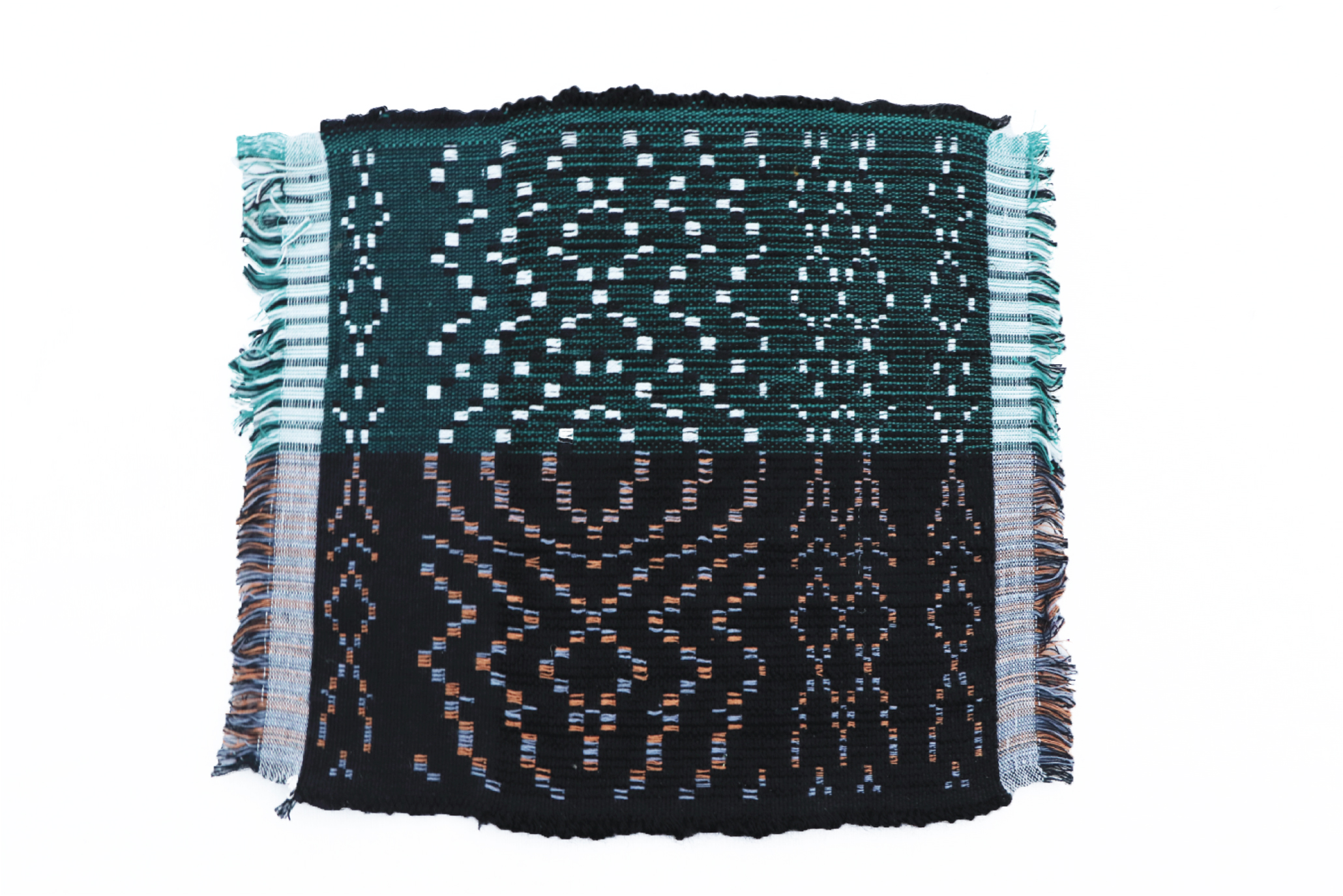
6. Weft Piling
Exploring the towel weave structure.
Here cotton is used for both warp and weft.
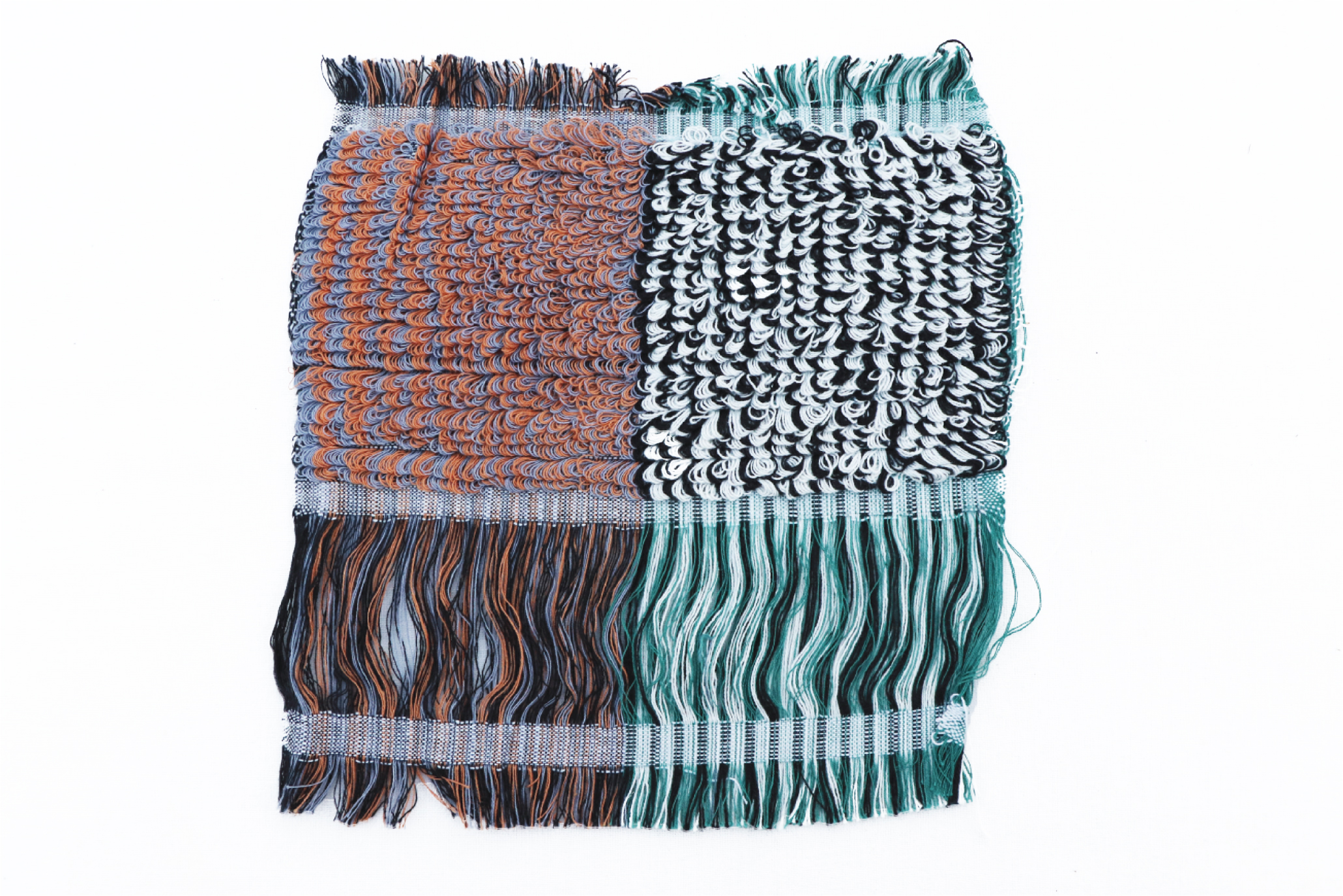
7. Backed Cloth (Block Drafting)
Two layers bound together having entirely different 3D structural properties.A combination of cotton (warp) and acrylic wool (weft) is used in this sample.

8. Double Cloth (Block Drafting)
Two layers woven simultaneously and the top layer is simply not woven at some places. The floating warp yarns are knotted on loom as detailing.

9. Weave Texture exploration
Exploring the weave structure conveying different properties and visual appeal. Combination of Plane, Satin and Twill weaves are woven together to spot the difference in textures.
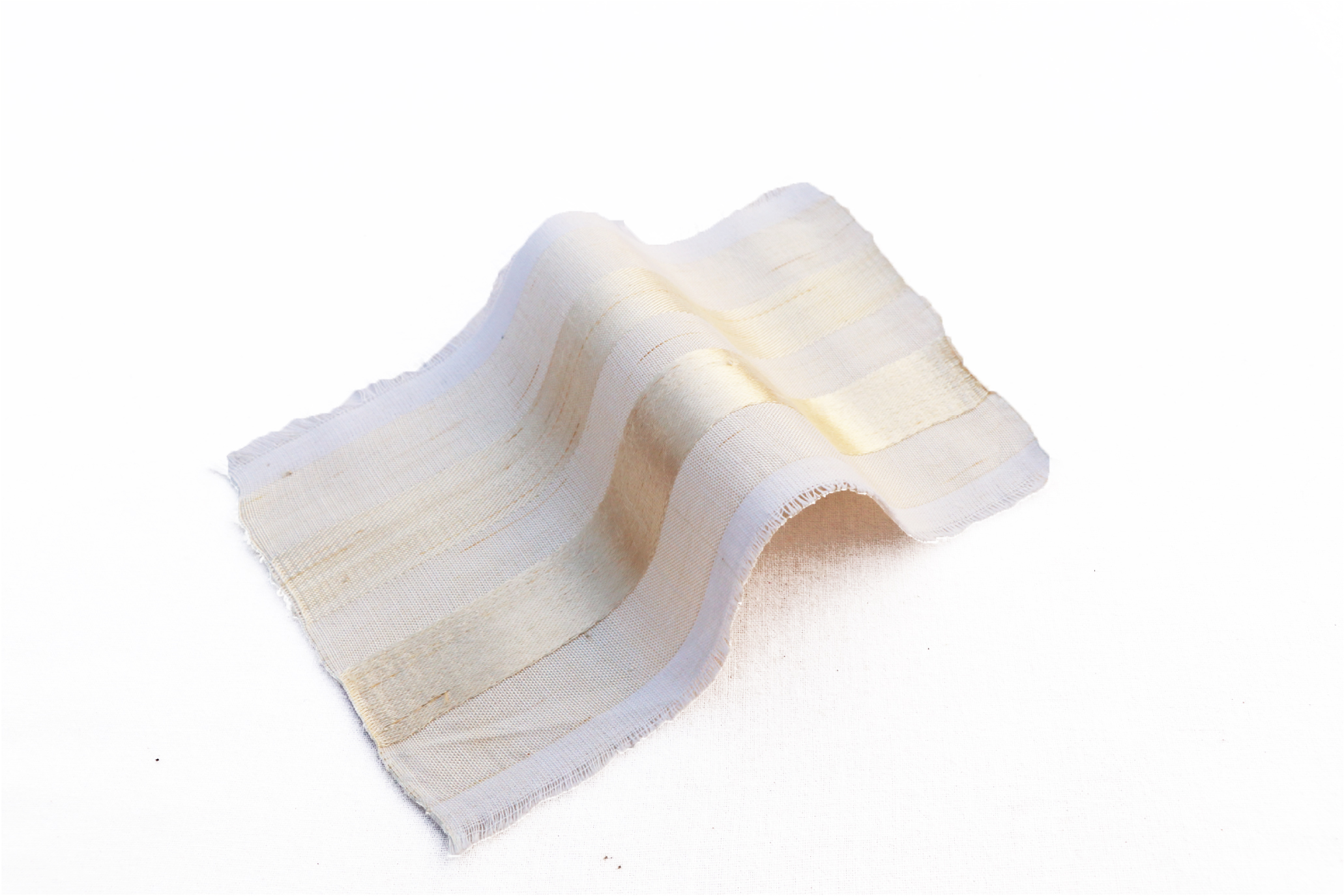
︎︎︎
Back to Top3 weeks, Academic project (2019)
National Institute of Design
Guide: Rudranil
National Institute of Design
Guide: Rudranil
बसंती
BASANTI
Advance Print Design
Inspired by- THE TRUCK ART
In the years after World War-I, trucks were made available to common men for the transportation of goods and fuel in India. This created a need for distinction and pride of ownership, which gave away an extravagant, diverse and aesthetic form of art called the Truck Art.
The heavily painted and ornamented trucks represent an artform that transforms the dusty, long and risky highways into a colorful exhibition of the unique talent of the truck artist and mood elevating driver’s sentiments towards his vehicle. Indian trucks are merely a form of expression to the truck driver and the artist. Use of loud colors and forms makes the vehicle a visual treat for the eyes. Being away from home for months, the driver develops an overpowering affinity towards his truck. Thus it becomes his pseudo wife and home.A symbiotic relation can be seen between the forms/typography and the old fort architecture of Mumbai (1920-1930). The building renderings in wood can easily remind one of the truck art’s way of 3D renderings, lettering and distinct drop shadow types.
After industrialization, this artform has constantly been depleting. A lot of big transport companies came into picture which led to this artform fade away in many ways. The ban on animal hair brushes, bold brush strokes got replaced with stickers and spray paints which costs relatively less.
So, this print is made keeping the unique identifying features of the truck art intact and portrayed it as a ornamented bride/pseudo wife. The aim is to throw light on this beautiful relapsed artform which accepts, celebrates and takes pride in our culture.


Ideation
Exploring the different characteristics an ornamented truck in south Asia has. The distinct forms and shapes holds a certain meaning or connotations. The bold use of colors and brush strokes brings out the feelings of the artist and gives character to a truck.
Print and Colour ways-
The idea was to make an engineered print that combines the different elements together and follows language. A set of forms, experimental colors and highlights were used to strike an aesthetic balance within the print.


Size- 18 x 18 (inches)Technique- Screen print (4 screens + Base color)
Silhouettes-
Illustrative representations of the print and visualizing the possibilities on different fabric types.



Print Scale
An engineered print shirt where the placement of the print is decided /calculated before stitching the garment.
Coordinate Print
Engineered coordinate print inspired from the hand-carved 3D architectural woodcuts that are used to ornament an Indian truck.
A sheer printed layer is stitched on top to enhance the 3-Dimensional factor and makes the print interactive.

BASANTI
- A compilation of Colour Ways depicting the mood.
︎︎︎
Back to Top6 weeks, Academic project (2020)
Guide- Sanvri Handa
Guide- Sanvri Handa
Jailor
-Bukola ElemideAm in chains, you're in chains too
I wear uniforms, you wear uniforms too
Am a prisoner, you're a prisoner too
I have fears, you have fears too I will die, you self-go die too
Life is beautiful don't you think so
Mr Jailor
I’m talking to you Stop calling me a prisoner
Let he who is without sin- Be the first to cast the stone
Mr Jailor
You suppress all my strategy You oppress every part of me
What you don't know, you're a victim too
Mr Jailor
If you walking in a market place Don't throw stones
Even if you do, you just might hit One of your own
Life is not about your policies all the time
So you better rearrange your Philosophies
And be good to your fellow man
Mr. jailor
I wear uniforms, you wear uniforms too
Am a prisoner, you're a prisoner too
I have fears, you have fears too I will die, you self-go die too
Life is beautiful don't you think so
Mr Jailor
I’m talking to you Stop calling me a prisoner
Let he who is without sin- Be the first to cast the stone
Mr Jailor
You suppress all my strategy You oppress every part of me
What you don't know, you're a victim too
Mr Jailor
If you walking in a market place Don't throw stones
Even if you do, you just might hit One of your own
Life is not about your policies all the time
So you better rearrange your Philosophies
And be good to your fellow man
Mr. jailor
Composition by- Ravinshu Sagar
Guided by- A Bhaskar Rao
Voice- Shweta Marathe
Guided by- A Bhaskar Rao
Voice- Shweta Marathe
2 weeks, Academic project (2020)
Listening Space
Self exploration
Over one quater people are affected by hearing loss and the most common cause of acquired hearing loss is NOISE.
This is a tangible representation of how increasing noise pollution leads to insensitive ears (ignorant human behaviour towards nature).
Over one quater people are affected by hearing loss and the most common cause of acquired hearing loss is NOISE.
This is a tangible representation of how increasing noise pollution leads to insensitive ears (ignorant human behaviour towards nature).
Location sound- New Delhi, India
︎︎︎
Back to TopUPCYCLING
PLASTIC STRAWS
This project aimed at exploring the secondary but unique properties of straws such as porosity, light weightedness, slipperiness, cushiony/rounded, strong, etc. through interlacing them structurally on a loom. Various material and weaving technique combinations are used to make sample surfaces without changing the chemical properties giving them potentially a sustaining second life.
Sample 1



Weave- Honeycomb
Warp- straw
Weft- Sturdy metal wires
Concept- Combination of woven sturdy wires and straws forming big and strong honeycomb unit (6”x 2”) structure.
Warp- straw
Weft- Sturdy metal wires
Concept- Combination of woven sturdy wires and straws forming big and strong honeycomb unit (6”x 2”) structure.
Sample 2



Technique- Double Cloth (plane weave)
Warp- straw (3 metal wires inserted between the straws)
Weft- straw
Concept- The bottom layer is not woven after a point. So that the top layer can bend and give a shed to it.
Sample 3



Technique- Double Cloth (honeycomb+ plane)
Warp- straw (metal wires inserted at the topmost layer of honeycomb)
Weft- straw (metal wires inserted at the topmost layer of honeycomb)
Concept- Metal frame forms perfect rectangular units with evident depth to each unit. The bottom layer acts as a supporting layer to the units.
Sample 4



Weave- Honeycomb
Warp- straw
Weft- nylon
Concept- Bigger honeycomb units gives a significant hight to the sample. Thin nylon weft tends to hold the structure together.
︎︎︎
Back to Top2 weeks, Personal, exploratory project (2019)
